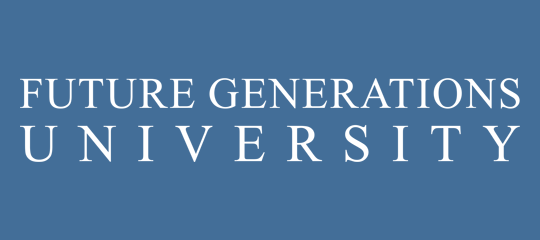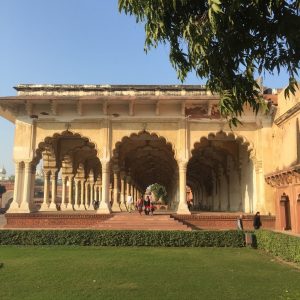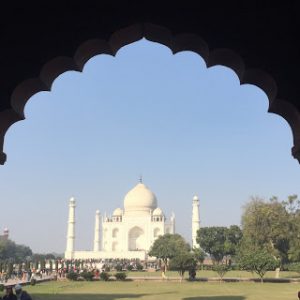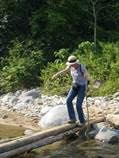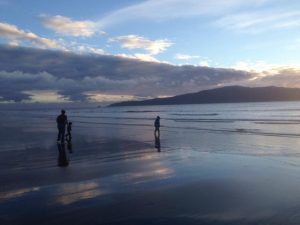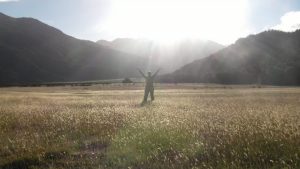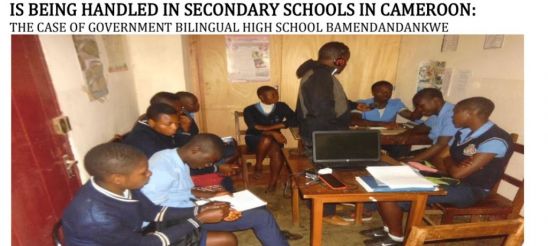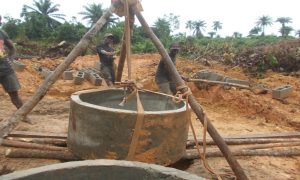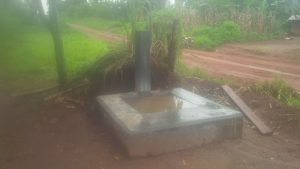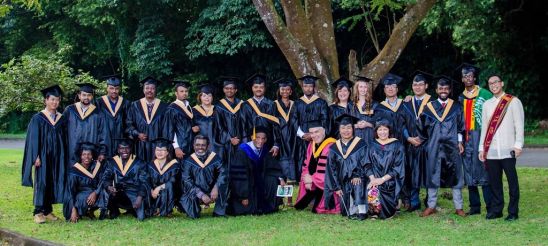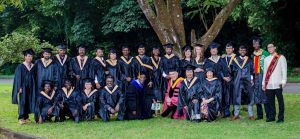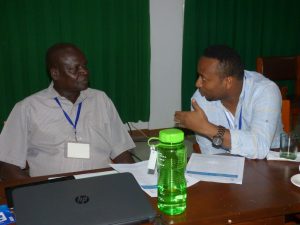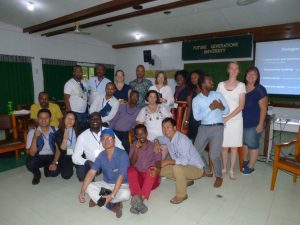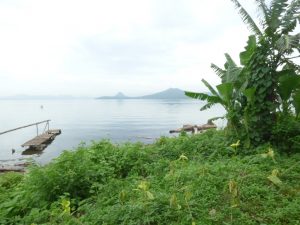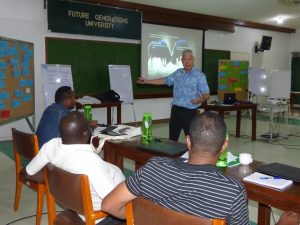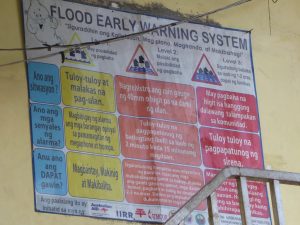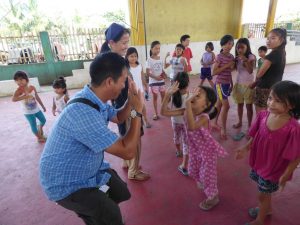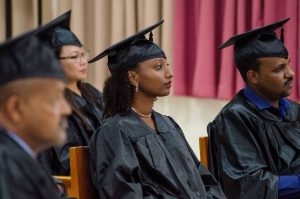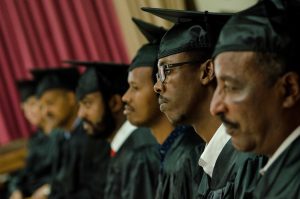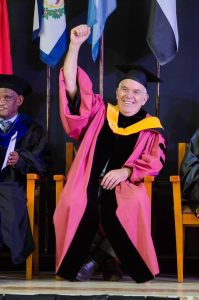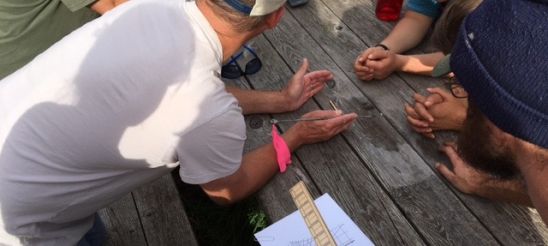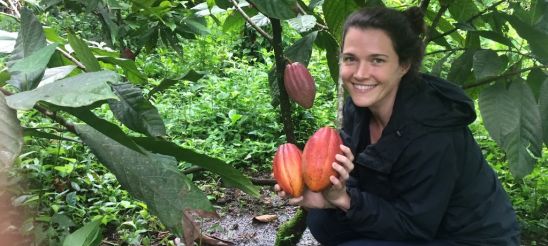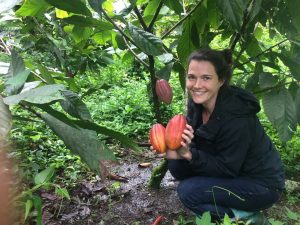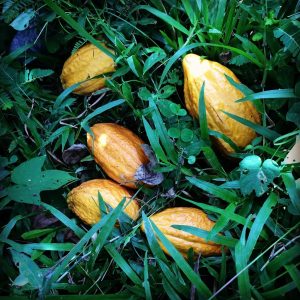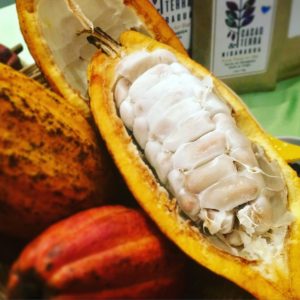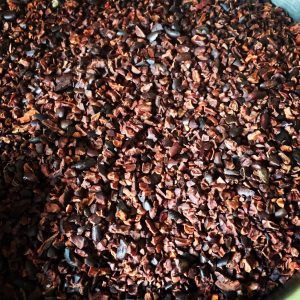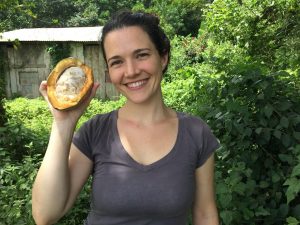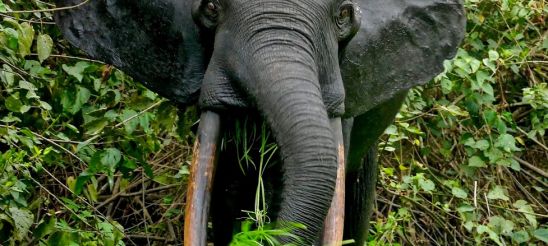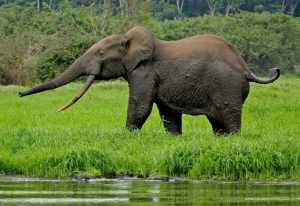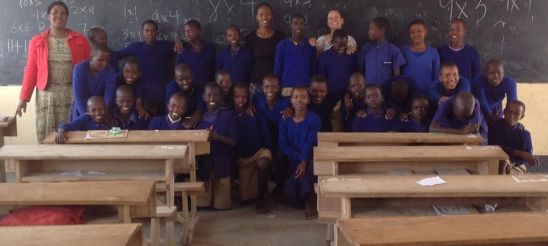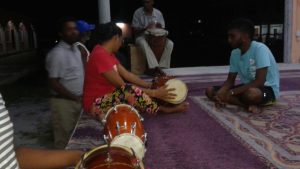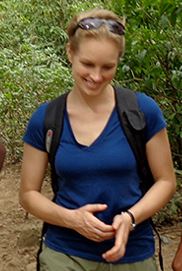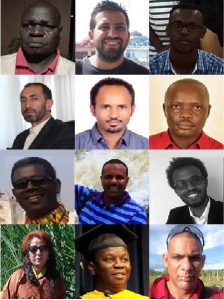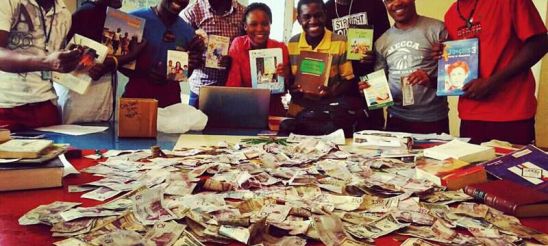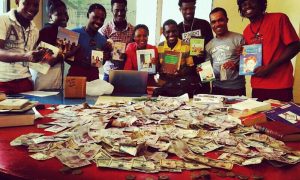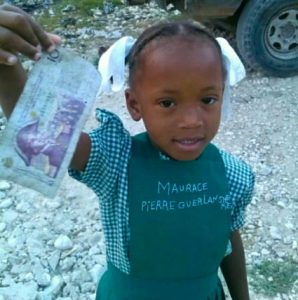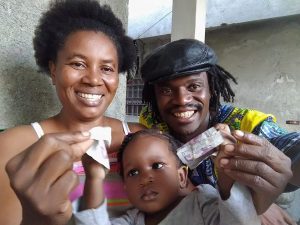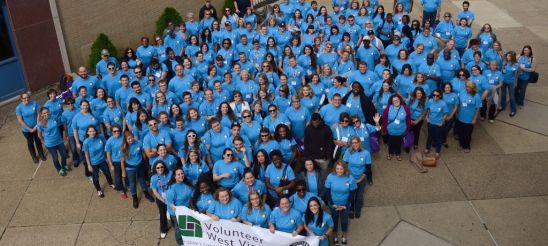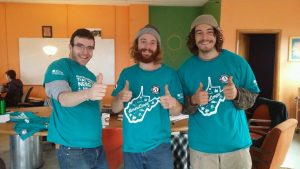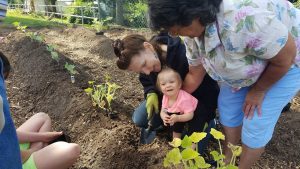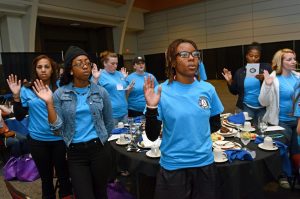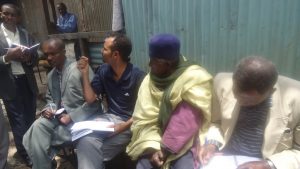
Community Development
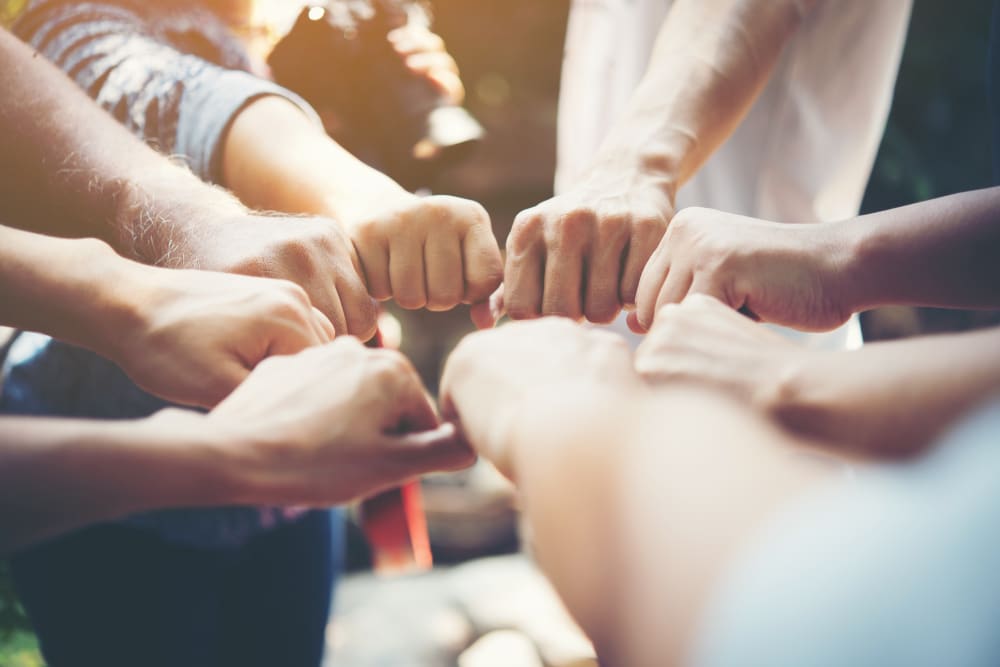
Understanding the Maple Syrup Industry

We Must Cultivate Our Garden
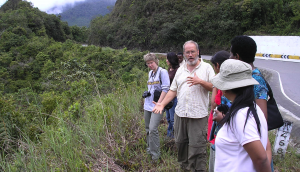
The last ten days appear to have shaken the world in general. News junkies will have been aware of COVID-19 since the beginning of the year. I made some long flights to and from in the US in late January, and I wore a face mask, even though only a couple of cases had been diagnosed in the US and none in Latin America. I was not the only one, perhaps 1 in 20 were doing it. However, the announcement of the World Health Organization on March 11 that there was an official pandemic coincided with the beginning of the drop in the stock markets worldwide. These came only a day or two after the first two positive cases were identified here in Bolivia. Bolivia announced the grounding of flights from Europe, with the last one arriving Friday the 13th in the morning.
Vincent Omara, Uganda – Class of 2017
Future Generations University is committed to empowering local people by giving them a voice and visibility. This is exactly what alumnus Vincent Abura is doing in his job at Gulu University in Uganda.
Cape Horn and Tierra Del Fuego: The Southern tip of South America- Part III
In the eastern division, the Argentine government has promoted development by offering substantial financial inducements to people to settle and work in this region, one that diplays relatively cold weather and long, dark winter nights. A good example of the success of the plan is Ushuaia, a settlement squeezed into space bordering the Beagle Channel. Starting with a town of only around 12,000 residents the population has now increased to a city over 60,000, and as this is a port of call, or the jumping-off site, for ships heading to and from the Southern Ocean and the Antarctic Peninsula, it is bustling with visitors in the summer months. Over 200 cruise ships dock here anually.

Ushuaia City on the Beagle Channel marks the southern border of the island.
These days tourism is a major economic driving force here and records show that back in 2015 over 300,000 visitors arrived on the island, the majority (55%) from Argentina. Numerous other business activities are promoted in this eastern part of the island including extracting oil and gas, as well as peat ‘mining,’ and logging. In addition, factories that produce textiles and plastics have been constructed in economic free zones while raising beef cattle is important as this region is free of hoof-and-mouth disease.
As with most mountainous tracts, foothill areas rise up on both sides of the main spine and each altitude level comes with distinct biological constituents. In the case of Tierra del Fuego the eastern foothills of the Darwin Range lie on the dry side where the lower slopes are home to a variety of herbaceous plants including beach strawberry (Fragaria chiloensis) and calafate (Berberis buxifolia), both of which were gathered by the Yaghans for food. Stands of trees grow where conditions allow, and among these is the conifer,Pilgerodendron uviferumin the cypress family, the southernmost cone-bearing plant in the world and one often found in association with subpolar beeches, Nothofagus sp., and Winter Bark,Drimys winteri, the bark used by early travelers to prevent scurvy.
Cape Horn and Tierra Del Fuego: The Southern tip of South America- PART II
By Professor Robert Fleming
Only a few island groups on our planet have remained mostly free of human impact and with good fortune, a portion of the Tierra del Fuego Archipelago, below the Beagle Channel, is one of these. Here lies the small (244km2/94mi2) Cape Horn National Park, which encompasses both shallow marine habitats along with the island groups of Wollaston and Hermite. Cape Horn Island itself is a miniscule part of the reserve.
Some of the islands below the Beagle Channel are treeless andexhibit tundra formations as well as alpine habitats, these often intermixed with freshwater ecosystems such as peat bogs that are repleat with species of Sphagnummosses. Indeed, the whole region is a bryophyte hotspot, especially well known for its great diversity of cold-adapted liverworts and mosses.
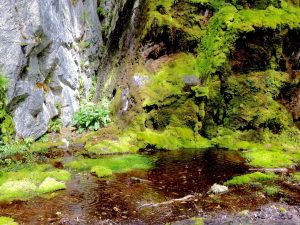
Shaded areas on islands west of the Darwin range are conducive to fern and moss growth.
In addition, other islands in the region are partly covered with a mixture of southern evergreen forests or subpolar deciduous forests. A main component of the former is the southern beech Nothfagus betuloides, and the white-flowered Drimys winteri (in the Winteraceae family). While the deciduous forests are mostly composed of the southern beeches, Nothofagus pumilioand N. antarctica.
Cape Horn and Tierra Del Fuego: The Southern tip of South America- PART I
By Professor Robert Fleming
I am the albatross that waits for you
at the end of the world.
I am the forgotten souls of dead mariners
who passed Cape Horn
from all the oceans of the earth.
But they did not die
in the furious waves.
Today they sail on my wings
toward eternity,
in the last crack
of Antarctic winds.
– Sara Vial
A world of wind, waves, and swirling spray is home to the albatrosses of the Southern Ocean, the birds a fitting symbol for the spirits of the many mariners who have perished attempting to sail around Cape Horn (Cabo de Hornos) at the tip of South America. These roiling seas hostmany oceanic birds including petrels, skuas, and shearwaters, but the primier species are albatrosses, their seemingly effortless flight beautifully adapted to the circumpolar winds that continuously blow east between 40 degrees and 60 degrees south latitude. Beneath the ocean’s surface, the Antarctic Circumpolar Current also circles east, little impeded by any land mass except where it has to squeeze through the 800km-wide Drake Passage between the Antarctic Peninsula and South America.
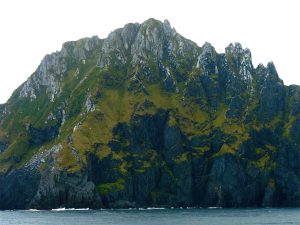
Cape Horn Island as seen when approaching from the south.
Read more…
Bioacoustics in Bolivia
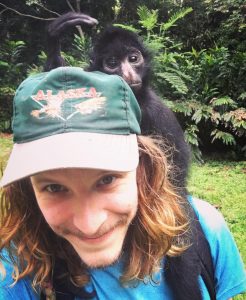
Shane with a local friend. Photo by Rommel
My name is Shane Palkovitz. I am a socioenvironmental specialist for the Songs of Adaptation research project at Future Generations University. The core investigations of this project focus on establishing an international baseline for biodiversity, while at the same time gathering knowledge from community members about human adaptation to climate change.
In March, I had the joy of traveling to Bolivia to work with local partners to establish a new research location. Our goal was to install four monitoring stations that will later serve as the beginning point for a larger research project.
We spent the first few days trekking through the jungle, looking for sites and gathering information before installing instrumentation. Pictured below, Alejo follows as other team members venture up a stream bed on El Chocolatal, an eco-resort.

Sweet Opportunities for West Virginia
By Karen Milnes
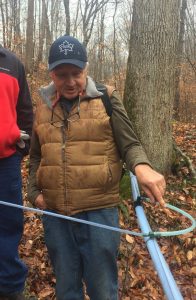
Mike Rechlin, professor at Future Generations University, gives a tubing demonstration.
Everybody knows about Vermont maple syrup, and it’s time to put West Virginia on the map. With an estimated 0.04% (USDA—NASS) of the state’s tappable maples in production, there’s a lot of room for growth. And if this industry is doing anything, it is growing. And fast. According to a survey conducted by the Appalachian program at Future Generations, the number one component in helping our state’s maple industry expand is the need for more sap from more taps.
With ongoing innovations in the sap to syrup process, a growing number of West Virginia producers are capable of processing a lot more sap than they can obtain. Backyard syrup making is not only a mountain tradition in these parts, it’s a growing hobby as the farm and food movement sweeps across our nation. The Sweet Opportunites: Tapping West Virginia’s Maple Resource project at Future Generations University aims to start networking sap collectors and syrup producers, setting up a “hub” model, already popular in more established maple syrup producing states. What’s nice about this model is that it allows, for fairly minimal overhead, just about any landowner with maples on their property and a maple syrup producer nearby, to break into the industry with little risk. Oftentimes, sap collectors simply selling their raw sap are able to pay off the collection equipment in the first year. In a relatively short time, they can begin scaling up their operations and considering purchasing larger equipment to begin producing their own syrup.
Inspiration in India
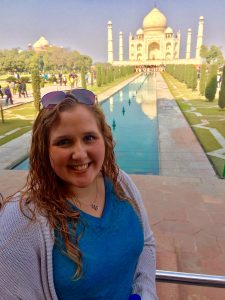
Our Learning Management Coordinator, Paula Smith, attended our field-based course in India in January. See what she has to say about the experience!
Why did you attend this field-based course on the Gandhian Method?
I was thrilled to have the opportunity to attend the Gandhi course in India. I work with the Future Generations certificate program, so I’ve helped to plan and manage this course in years past, but it was such a rewarding experience to be there in person and see all the hard work come together for a great learning experience. It helped to give me insight on how to coordinate the student experience even better going forward.
Making Maple Syrup in WV
By Mark Lambert
If you would’ve told me at this time last year that I, my wife, and our business partners would not only be producing, but delivering West Virginia Pure Maple Syrup across the state, I would’ve had to “lol.” Literally. Not just in a text or an email.

With the help of Future Generations Maple Sap Collecting and Syrup Processing certificate program, we’ve gone from wondering what our next step in the foodservice and transportation business world might be to learning how to collect sap on a commercial level. More than this, we’ve learned how to process that sap into syrup, label and bottle it for retail, and distribute not only our own finished product, but also other producers’ syrup, to retailers all over the state of West Virginia.
Alumni Feature: Melene Kabadege
Melene Kabadege is a Rwandan health professional and practitioner who attended Future Generations University as a member of the Class of 2007. A nurse with a Bachelor’s in Public Health and 16 years working for World Relief’s health and nutrition programs, Melene was seeking a way to become a true Community Health specialist.
When she met Dr. Henry Perry in 2014, a member of the Future Generations faculty at the time, and learned about the University, she realized that her dreams of bringing positive and sustainable change to her community were more achievable than she thought. She credits her education here with building her knowledge and skills in community empowerment, social change, leadership, and how to leverage and lead community successes. This empowered her to bring about lasting healthy changes in her community.
Through the Master’s program, Melene became more confident in her abilities as an agent of change and sustainable development. This inspired her to start Community Fountain Project, an NGO with the purpose of working hand-in-hand with the community to improve lives. Community Fountain Organization is currently implementing the INEZA Project, which aims to prevent under-nutrition and reduce stunting in the Kamonyi District of Rwanda.

Farmer Field and Learning School
A member of Future Generations Global Network, as are all Future Generations graduates, Melene succeeded in winning a small grant from the organization in 2017 with the purpose of implementing a Farmer Field and Learning School. Here farmers serve as teachers to their peers and join together in a farmers’ cooperative. The Project areas of intervention were: improving farming techniques, improving nutrition in the first one thousand days of a child’s life, and improving saving and learning skills. Melene’s group worked with local leaders to ensure proper project monitoring.
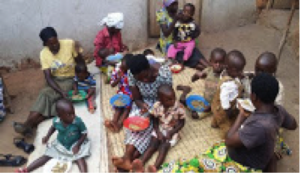
Hands-On Nutrition Session
After six month’s of project implantation, the team noted several behavior changes taking place in the farmers’ households. Notable outcomes include: couples participating in nutrition learning adopted better nutrition practices for pregnant women and children under age two, families have improved hygiene and feeding practices, men have taken on an increased role in child care, improved farming techniques have been taught and adopted, farmers have been mobilized towards the operation and maintenance of community works, erosion control plants have been put into place, and 25 saving and lending groups have been implemented that all remain operational.

Voluntary Savings and Loan Program
At the end of the first year, the program has been considered successful and highly appreciated by community members and leaders alike. The project was implemented in 3 out of 12 Sectors of Kamonyi District. Fundraising activities are currently ongoing with the aim to extend the INEZA Project to cover all sectors of Kamonyi District and to become a learning center for community partnership in reducing stunting and improving the life of the vulnerable people.
Congratulations to Melene on her impressive work, and our thanks for sharing her story!
Make sure to follow the blog for more stories on the inspiring work being undertaken by our incredible alumni!
Remembering John Campbell
Future Generations lost a friend when John Campbell passed away in November of 2018. He encouraged us to take risks; specifically to push against the limits of accreditation policies to achieve the true purposes of learning. Although no longer physically here to encourage us, his message endures. “Do the right thing,” he said, “then explain you broke the rules because not doing so would have been a worse thing.”
We first became acquainted with John a decade and a half ago when he came as a member of the Higher Learning Commission accreditation team, sent here to inspect whether Future Generations was meeting the requirements of higher education and deserved accreditation. His job was to ‘check the boxes’ and make sure we were following the rules. What set John apart was that in checking the boxes, he was searching for achieving the higher purposes of the regulations.
John spoke at length with our president, Daniel C. Taylor, and the message he gave was that to achieve learning requires going forward, building on the resources present in the place. The place of Future Generations University is the world, with students from around the world who learn from the world … and most importantly shape their local worlds into better places. John recognized the potential in our idea, which was new at the time, and remained in contact with the school until his death.
Please join us in remembering John’s remarkable life with the following account, kindly provided by his family.

John Roy Campbell, PhD, DSC, DLitt
June 14, 1933-November 17, 2018
John was born near Goodman, Missouri and grew up on a small farm. He was the first of his immediate family to graduate from high school, and credited the receipt of a scholarship from the Sears Roebuck Corporation as the impetus to enroll in the University of Missouri-Columbia (MU). There he earned a B.S. with honors in Dairy Science from MU College of Agriculture in 1955, working three part-time jobs while doing so in order to fund his education.
Also during this time, a friend introduced him to Eunice Vieten, who shared his background of having grown up on a dairy farm. The two married and remained happily so until his passing, raising three children and later becoming grandparents along the way.
After receiving a fellowship to pursue Master of Science degree in Dairy Manufacturing, he served one year in the Army reserves, having been in the ROTC during college. Following that, he served two years of Active Duty in the Army’s Seventh Artillery. After discharge from the Army, he returned to Columbia to pursue his PhD in dairy cattle nutrition and physiology at MU. He continued serving as a member of the National Guard Army Reserves Field Artillery for the next 22 years, rising to the level of Lieutenant Colonel and Battery Commander of his unit. In 1983, John received The Meritorious Service Medal from the United States Army for his service.
Following completion of his PhD in 1960, John joined the MU Dairy Science faculty where he quickly rose through the ranks to become a full professor in 1968. He received nearly every award available to faculty members during his 17 years teaching there.
John taught several courses relating to dairy husbandry and animal sciences, and co-authored two textbooks. He viewed students as “our nation’s most valuable resource.” He wrote his book In Touch With Students: A Philosophy for Teachers (1972) to share his teaching philosophies with others.
In 1977, John was recruited by the University of Illinois as College of Agriculture Associate Dean and Director of Resident Instruction. In this new role, he demonstrated a zeal for the land-grant philosophy of higher education – providing educational and career opportunities for the sons and daughters of the working classes. He gained support from private individuals and corporations to establish a merit-based scholarship program to help recruit, recognize and support high-caliber students to pursue careers in agriculture, home economics and related professional fields. He selected the name Jonathan Baldwin Turner (JBT) Agricultural Merit Scholarship Program in honor of one of the initial proponents of land-grant universities. The program has been highly successful with alumni holding prominent positions in industry and at universities.
In 1983, John was named Dean of the College of Agriculture at the University of Illinois. Innovation, dedication and cooperation with people, both within and outside the College of Agriculture, were hallmarks of his deanship. His leadership was central to the College obtaining $61.2 million for construction of five new facilities. Colleagues have referred to his time at Illinois as “a golden era.”
John was appointed the fifteenth President of Oklahoma State University (OSU) on August 1, 1988 and served until 1993. At OSU he continued his student focus, championed international involvement and inter-university partnerships, and expanded distance learning. He resigned as OSU president in 1993 to teach in the OSU College of Agriculture and resume writing. In 1998, he published his fourth book Reclaiming a Lost Heritage: Land-Grant and Other Higher Education Initiatives for the Twenty-First Century, which has been used in teaching Honors Courses and educating others on the heritage of the land-grant system.
John retired from Oklahoma State University in 1999 and returned to Columbia, Missouri to take aim at new goals and opportunities. During this time, he served as a Consultant-Evaluator for the Higher Learning Commission/North Central Association and on the National University of Natural Medicine’s Board of Directors from 1998-2013. He also continued presenting lectures for numerous organizations. Having viewed the need for changes to increase societal perceptions of higher education, he wrote a novel titled Dry Rot in the Ivory Tower: A Case for Fumigation, Ventilation, and Renewal of the Academic Sanctuary, and another textbook, Companion Animals: Their Biology, Care, Health, and Management.
Throughout his professional career, John demonstrated a caring attitude toward and sincere interest in students, their careers, and personal lives. He had the privilege of teaching more than 12,000 students and published more than 100 papers. He accomplished much and left a legacy at each of the universities where he served.
He loved to tell stories and share the knowledge he had gained through his many journeys and discussions with people from “all walks of life” and was quick to extend congratulations to others on their accomplishments. At this time of loss, a smile comes to mind envisioning John sharing stories with those who preceded him in “graduating to heaven.”
U.S. Series- Part IV: Conservation that Respects People and Planet
Summary from Just and Lasting Change by Associate Professor, Noam Schimmel
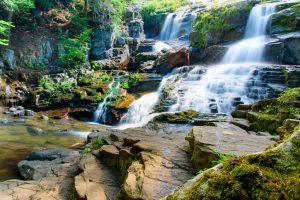
An article in Britain’s Guardian newspaper recently suggested that as much as 50% of the planet needs to be set aside from human habitation to stave off mass environmental degradation and irreversible destruction of animal and plant species.
The intention behind this argument is a good one: to conserve the earth’s biodiversity and natural life forms.
These have their own intrinsic value, but also ultimately benefit people in ensuring that natural resources are protected rather than exploited to the point of unsustainability; that air, land, and water are protected in ways that promote public health, and that global warming and other forms of environmental harm are mitigated.
But there is a fallacy at the heart of the notion that the primary way to advance conservation is by removing people from nature.
People and nature are not necessarily adversaries. There are many examples, including contemporary ones, of people serving as successful guardians of nature, rather than as antagonists to the environment and its conservation.
The misguided notion that people and nature are adversaries has sullied conservation since the incarnation of the modern conservation movement. It needs to be acknowledged and addressed because it both hinders and slows environmental conservation and can contribute to denying the human rights of people who depend on nature for their livelihoods.
For many people, as individuals and as communities, their lives, values, and cultures are intimately and inextricably bound with nature.
U.S. Series- Part III: The Green Bay Packers: Community-Owned Energy
Summary from Just and Lasting Change by Associate Professor, Noam Schimmel

When you think about football, chances are you don’t think about community development, shared resources, a commitment to a non-profit ethos, and a cooperative approach to owning and managing a sports team.
But there is an open secret about one American football team that, while famous for the quality of its players and the passion of its supporters, should also be famous for its communitarian spirit, structure, and values.
As the Green Bay Packers By-Laws state, ‘The association shall be a community project intended to promote community welfare and that its purposes shall be exclusively charitable.”
This challenges the dominant paradigm of what drives sports in America and around the world: profit making. Sports are big business and they are, for the most part, run as big business.
But there are exceptions.
And it turns out that while the Green Bay Packers do make money what they do with that money and how they reinvest it in their community is what is so unique and notable, beyond their sporting excellence.
As Paz Magat, the author of this chapter in Just & Lasting Change, writes,
“The Green Bay Packers are one of the most iconic teams in American football, a team that has won thirteen championships – more than any other American professional football team – and a team that comes from the smallest city of any professional football team. So how is this team a charity? How does it promote community welfare? The answer is that instead of making money, the purpose of the team is winning for the community.”
U.S. Series- Part II: The Lesser Known Lincoln
Summary from Just and Lasting Change by Associate Professor, Noam Schimmel
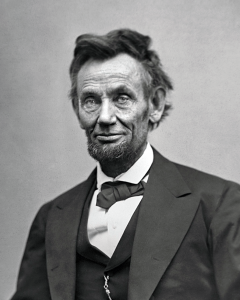
About Abraham Lincoln so much has been written it appears unlikely that there is more to say about him that might be new to readers. But, there is a part of Lincoln’s legacy that is genuinely underexplored and not widely known and it merits attention.
Lincoln was committed to advancing human development in a young United States in a way that was deeply democratic, progressive, and marshalled human resources in innovative ways that were ground-breaking and far-reaching for his time. The legacies of the policies and programs he advanced remain as defining features of American life today, and he had an animating vision of unity in diversity that informed those policies and programs.
We take the holiday of Thanksgiving for granted; it has become one of the defining features of American cultural life. Whatever one’s religion, ethnicity, politics, heritage – wherever one comes from – Thanksgiving is widely celebrated by a huge cross-section of Americans.
What many don’t know is that we owe Thanksgiving to Lincoln, who set it aside as a holiday of thanks that he had the foresight to recognize would unite Americans despite their many divisions. To this day, it continues to do so and to bind Americans across boundaries of difference, both real and imagined, small and profound.
U.S. Series- Part I: The White Mountain Apache: Reclaiming Self-Determination
Summary from Just and Lasting Change by Associate Professor, Noam Schimmel
An Example of SEED-SCALE in Arizona
Seed-Scale has been used by Native American communities to explore and assess their communal needs and resources and to advance development that stems from the community and reflects its needs and preferences.
The White Mountain Apache of Arizona have historically had mixed experiences of government neglect as well as government support, with government support often creating unsustainable relationships of dependency that undermined dignity and freedom.

Daniel Taylor reflects upon the history and culture of the Apache of Cibecue Valley:
“The two thousand Apache of the Cibecue Valley, in eastern Arizona, are the most isolated members of the White Mountain tribe. A high percentage of the people still speak the Apache tongue, and they try to keep the older ways alive. Older residents tell of idyllic childhoods spent in the forests with deer and other wildlife as neighbors, when Cibecue Creek still abounded with trout and beaver. They tell of times when women spent their days collecting plants for food and medicines while men and children spent their days on horses. Young people are encouraged to learn traditional stories, dances, and handicrafts and to take an active part in rituals that strengthen tribal identity and values.”
Rookie Producer’s Take on the Southern Syrup Research Symposium

How many of you know about Future Generations University’s maple syrup program?! Check out this blog by the West Virginia Maple Syrup Producer’s Association’s own Tina Barton and see what she had to say about the related symposium she attended!
Read here: https://wvmspa.org/2018/10/06/rookie-producers-take-on-the-southern-syrup-research-symposium/
Bending Bamboo
By Katie Larson
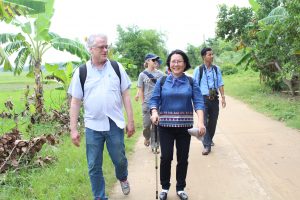
When do we learn about sustainable development?
How do we learn about sustainable development?
Who is this we that I keep mentioning?
Is sustainable development only a topic for development professionals?
Even if we learn about sustainable development as children, which children get access to the “juicy”, life-changing content, produced by the United Nations, climate scientists, and development professionals?
If you speak English, you can easily access this “juicy” content. If you are confident in English, you can go further and sift through this content. If you have cultivated your critical thinking skills, you can go even further and compare the content you are reading with the reality of sustainable development in your context.[1] Think Bloom’s Taxonomy. Then think about how English fluency fundamentally impacts who gets access to the knowledge critical for understanding and meaningfully supporting the health of our changing planet.
Now, what if you are not confident in English? Imagine that you can’t sift through the many amazing resources available on sustainable development. Maybe the only content you can access is general information. You know what I mean, the information that explains that if we drive our cars less then we can stop the polar ice caps from melting and save polar bear habitats. Two very important issues to solve, yet, superficially examined and far from many people’s day to day realities.
Those of us in the development sector know that sustainable development has many definitions and that its diverse definitions, applications, and manifestations are a result of complex contextual realities. Yes, sustainable development is certainly a concept to associate with solutions to climate change. However, sustainable development as a solution must be understood in context, in a way that values local economics, health, infrastructure, and all of the other important topics of the United Nations Sustainable Development Goals.
Here is where the study of language and the study of sustainable development are similar. According to the Communicative Approach in language learning, when learning how to communicate in another language, the learner’s context matters. Imagine you are a 10th Grade student living in rural Vietnam with a high likelihood of never traveling outside of your country. You go to English class (a required subject) and open up your textbook (published in London) and scan the lesson. The lesson asks you to imagine you are discussing your recent trip to Piccadilly Square in London. What did you see? What did you eat? How were the British people? Now ask yourself, am I going to be engaged in learning how to communicate with this kind of content? Also ask yourself, will this lesson give me skills for a future career? Students who cannot link content to context and who see no relevance in learning about things they don’t think will help them in the future, are not going to seek greater fluency in a foreign language. With content unconnected to context and irrelevant to the student’s future, English language study becomes a tool only for those few students who think they will travel and/or find employment outside of Vietnam. But the truth is, English is a global language. It can be used in rural and urban Vietnam to connect people, business opportunities, science, and funding from around the world. It can also be used to foster international collaboration on sustainable development solutions for communities.
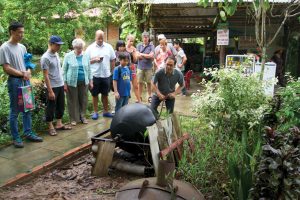
The process is the same with sustainable development knowledge acquisition. What if the content you access is tooooo unconnected to your context? What if you don’t have the English skills to sift through the content? What if you don’t have the critical thinking skills to compare and contrast content with context? Will your sustainable development education equip you to visualize sustainable development in your context? For many, the answer is no. Arctic ice problems are important. However, if they are presented as an isolated challenge, they will seem like frivolous topics of study for someone living in a tropical river delta…say the Mekong River Delta. And those of us fluent in sustainable development know just how connected the ice caps are to our oceans and the river deltas that neighbor oceans. With superficial sustainable development education, students exit school without understanding the ways in which their actions and future careers might help or hurt Earth’s ecosystems.
Now, I have a BIG question regarding English fluency as a tool to access, sift through, and critically think about sustainable development. Can we drive English language acquisition while driving sustainable development knowledge acquisition?
This is a question that Bending Bamboo is trying to answer.
What is Bending Bamboo you might ask? Bending Bamboo is a process for acquiring intercultural, communicative, competence, confidence and collaboration (iC5) skills in English and sustainable development. Bending Bamboo does this by connecting English and sustainable development to context. It currently operates in Can Tho, Vietnam – the hub of the Mekong Delta. Over a two-year cycle of workshops and online forums, Mekong Delta teachers and professionals work together to acquire their own iC5 skills and then create a curriculum that teaches these iC5 skills to their students and employees. The first deliverable of this cycle is a teacher text. The next is a student text. Both incorporate local research on sustainable development in Vietnam and South East Asia. Both incorporate the knowledge of the teacher, farmer, tour guide, and corporate professional. They both seek to support English language and sustainable development knowledge acquisition.
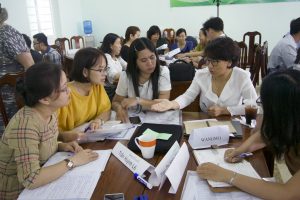
In its most recent workshop in July, Bending Bamboo began to visualize a concrete answer to this BIG question.
During 60 hours of workshop learning, participants were introduced to sustainable development information and stories from local and global perspectives, in English. Local and foreign experts were brought in to share their science with the participants, in English. As proficient English speakers already, the participants could sift through the content of the workshop. Tasked with reviewing and comparing sustainable development content from here and there, teachers also cultivated their critical thinking skills. For 18 participants, this was their second Bending Bamboo workshop. For these 18 participants, post-workshop evaluations showed that both their communicative English confidence and sustainable development knowledge confidence grew!
That’s good news. Bending Bamboo participants are citizen-leaders in the Mekong Delta of Vietnam. They are knowledge bridges for their communities. These citizen-leaders are now critically interacting with local and global sustainable development discourse. Even better, these citizens are, inherently, strategically positioned to spread their knowledge. Bending Bamboo is currently leveraging this strategic positioning through the collaborative creation of the Bending Bamboo Teacher Text for grade 10-12 teachers in Vietnam. Next is the collaborative creation of a Bending Bamboo Student Text for Grades 10-12. With these two tools, participants and the Bending Bamboo team can tangibly impact a student and citizen’s ability to access and meaningfully engage with sustainable development discourse.
As Bending Bamboo continues to answer, through data, its BIG question, it also eagerly and intentionally looks forward to answering the next question. It is a BIG BIG question. Can the integrated Bending Bamboo curriculum not only drive communicative English and sustainable development knowledge acquisition, but also drive sustainable development action?
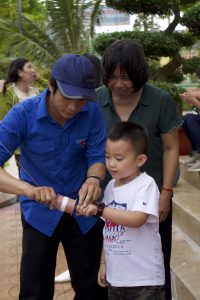
Now, just for fun, I shall end with two more questions. These are BIG BIG BIG questions to get you excited and thinking about the potential of creating and implementing, context-driven, quality education. Approximately 50% of Vietnam’s population is under age 25[2]. What happens when Vietnamese youth are confident in integrated iC5 skills for English and sustainable development? What impact will this rising generation of Vietnamese citizens have on their provincial, national, ASEAN, and global communities?
[1] Interested in this statement? Read: Powell, Mike (2006). Which Knowledge? Whose Reality? An Overview of Knowledge Used in the Development Sector. Development in Practice, 16(6), 518-532.
[2] From the General Statistics Office of Vietnam
Development Series- Part IV: Advancing Human Development in Kerala, India
Summary from Just and Lasting Change by Associate Professor, Noam Schimmel
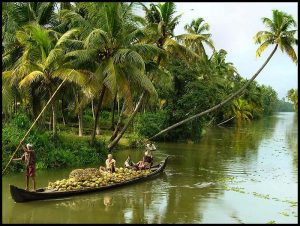
Human development that significantly advances quality of life does not have to be expensive.
It is often assumed that to make major advances in the quality of human well-being development efforts that address healthcare, education, food security, and the well-being of women and children are necessarily extremely resource intensive and therefore dependent on massive outlays of funding to advance human security.
But this is not the case.
Successful forms of development that have been transformative in positive ways and are well documented in development literature show that human well-being can be advanced with basic resources that can be found in most communities, including in countries that lack financial resources and are classified as low income.
Put simply, financial wealth is not a prerequisite for fundamental human development.
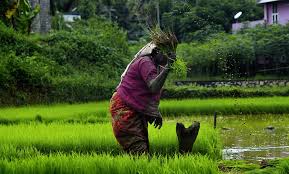
More significantly, trust, cooperative communal efforts to pool resources and expand them, careful and equitable planning, and support of local and national government coupled with local grassroots efforts are often sufficient to advance human development.
These advances lead to tangible improvements in life expectancy, improve quality of life and enhance health outcomes, promote the realization of the human rights of children and women and human rights more broadly, expand educational opportunities, and raise incomes and improve food security.
How is this possible and where has this been done? In Kerala, India.
Kerala, a region of South India, made huge advancements in human development without being dependent on external aid for enabling this transformation.
Kerala achieved the best health and education levels of development in India already by the 1960s, and continues to sustain them, while also maintaining the highest rate of political participation in India.
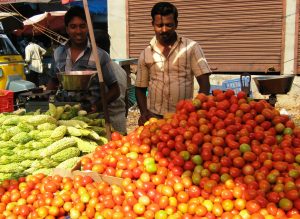
But, counterintuitively, it was also the poorest state in India when it had these dramatic health and education achievements.
In this seeming contradiction we can find vitally important lessons about advancing human development which may be counterintuitive, and for that reason merit attention.
Development research attributes Kerala’s outstanding social achievements to several factors.
Daniel and Carl Taylor, pioneers of community development together with UNICEF, explain that these include political leadership that was largely genuinely interested in advancing the welfare of Kerala’s residents and was not morally corrupt, a matrilineal tradition amongst many high caste Hindus in Kerala, a church that grew in adherents and advanced greater equity amongst its values and aspirations and promoted interreligious tolerance that also received the support of Hindus, and a progressive people’s movement that advanced social reforms.
According to Taylor and Taylor, this social movement initially fought back against caste-based discrimination but continued beyond that, advancing public literacy and education, promoting land reform, and making scientific knowledge broadly available to the public which has also played a role in public advocacy for continued environmental conservation.
Momentum built on momentum in positive interlocking ways: advancing women’s rights, promoting expanded educational opportunity, and providing enhance economic opportunities for trade that were open to a broad cross-section of the population all acted synergistically to advance human development.

The high literacy rate, for example, has enabled the average Keralan to follow newspapers and hold political leadership accountable in democratic elections and in between elections.
The evidence Taylor and Taylor provide is substantive and significant: In 2001 while life expectancy was 74 years in Kerala it was 59 years in all of India. Literacy in Kerala amongst females was 87%, while it was only 39% in all of India. In 2011, Kerala was the only state in India in which there was no preference for male babies; in 1991 its gender ratio was 1,036 females to 1,000 males, compared with 927 females to 1,000 males for India as a whole.
Kerala’s successes are impressive, sustained, and genuinely life altering for individuals and for society.
Taylor and Taylor note that economic wealth did eventually result from these substantial advances in human development in Kerala.
Today Kerala enjoys both high levels of social development and economic growth and greatly increased financial resources.
It is instructive to turn to Kerala’s history to learn that opportunities abound even in places that are initially resource-poor.
Human development can be enabled and derive energy from largely indigenous sources.
To be sure, Kerala’s model is unique to Kerala and its circumstances.
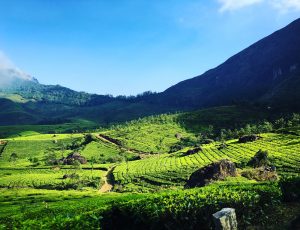
But undoubtedly, it has lessons for all countries seeking to advance human development and to the United States and other countries when conceptualizing and implementing development aid.
These lessons are encouraging in their affirmation of local capacity to advance positive social change from within that draws upon domestic human resources, some – but relatively moderate support from abroad, and the values and social policies that advance equity, social justice, and human emancipation which ultimately can unleash human development and well-being.
Development Series- Part III: SEED-SCALE in Nepal
Adapted from Empowerment on an Unstable Planet: From Seeds of Human Energy to a Scale of Global Change, by Daniel Taylor, Carl E. Taylor, and Jesse O. Taylor

(All photos throughout post taken from various Future Generations activities in Nepal.)
Traditional development has not dealt kindly with Nepal and has not succeeded despite huge investments of both human and financial resources over many decades.
If the best current development practices were effective, then they should have worked in Nepal. Six decades, several billion dollars, and the careers of some of the world’s finest development professionals were invested in the kingdom to reduce poverty, illiteracy, and illness. Yet today, 30 percent of Nepal’s population remains below the poverty line, with one-fifth of the country living on less than a dollar a day; half the population is illiterate, and mortality for children under age five is sixty per thousand live births.
How is this possible and what were its causes?
There were plenty of good intentions in all the right places. Economic growth was to reduce poverty. Education and elections were to build accountable government. Health services were to double life expectancy. For each, targets were set, and programs were generously funded. But while there was progress in many measurable program indicators, in each sector dysfunction grew in terms of how system relationships were functioning. Programs that were started fell apart when funding was diverted to other programs that interested donors. Newly built school buildings and schools a few years after being built by donors looked abandoned.
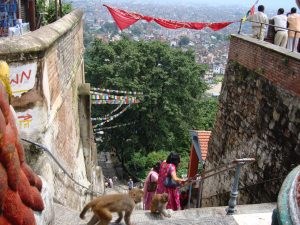
This dynamic is not unique to Nepal. Indeed, it characterizes the failures of traditional development programs around the world which Nepali development projects typified.
Intentions were good, outcomes were not.
Looking at Nepal as a case study helps to understand why community-based development that is genuinely communally oriented and involves real local participation and implementation is far more likely to succeed and be sustainable than traditional development projects reflecting huge, external outlays of cash and foreign expertise, but without local participation.
Without an integrated role for the Nepali government on national and regional levels to work in a three-way partnership both with local Nepali communities and with external development and aid agencies – and the resources and expertise they bring – development in Nepal was not sustainable.
The Taylors argue that although Nepal lacked financial and human resources initially, in the 1950s, when development projects began, Nepal actually had access to extensive financial and human resources available since that time, for over sixty years. In other words, the failure of Nepal’s development trajectory is not because development was working and was simply underfunded and/or not sufficiently expanded across the country. The problem was and remains that it was not working effectively, and it was not responsive to community needs.

According to the Taylors, by 1999 the bottom fifth of Nepal’s population suffered from greater poverty, malnutrition, and lower overall human development than in 1949. Traditional development programs implemented during these fifty years did not consider how the Nepali economy in the 1950s and through the 1990s was systematically excluding a huge sector of the Nepali population.
The core reason why the quality of life had gone down for the bottom quintile was that the currency of change had shifted. In 1949, a barter economy based on human energies gave employment options to poor people; but by 1999 the monetary economy had removed labor-based options; money was now required to participate in the modern world.
Had traditional development efforts been sensitive and responsive to this reality and the challenges it created for one fifth of the population, Nepal’s development trajectory would likely have been a much different and better one.
But they were not.
Further, even the development efforts they pursued that reached some of the remaining 80% of Nepal’s population, had relatively poor results and often ended in neglect or desertion because they did not link local communities in a meaningful, participatory way with the regional and national government and with foreign aid agencies and were not communal oriented.
Pockets of development would often take place in an isolated, temporally-bound manner creating the illusion of development momentum and positive change. Once the money and human resources stopped coming in, the development projects ended, development indicators declined, and local communities had neither gained in capacities nor resources to advance their own development and sustain it.
By definition, a program of development that relies primarily on external support and that does not reflect local communal needs and participation will eventually peeter out when funding ends and when human resources experts complete whatever block of time they have committed to a particular development project and country. When they leave and when funding ends, projects decline and eventually – often – die out altogether, with no one locally available to maintain and continue them.
Thus, there were decades when it appeared that traditional development was working: roads were being built, schools constructed and staffed with teachers, the economy diversifying, and Nepalis working abroad and returning to Nepal remittances that assisted Nepalis in Nepal to raise their incomes and their human development. Hotels and restaurants opened in Katmandu raising incomes and increasing employment there.

But these economic changes and expansions were not well distributed across the country in an equitable way and many were not long lasting.
The lack of democratic accountability, a rigid and exclusionary caste system, and high levels of corruption all contributed to the failure to advance development that was genuinely and sustainably transformative.
The international community acquiesced in maintaining old-order structures. For example, during these decades not one embassy or aid agency had more than a handful of token low-caste employees in managerial positions or engaged in systematic affirmative action hiring. Development was growing into a world of appearances: outputs were measured and contracts fulfilled, but connections between programs tended to be ignored.
When the monarchy was overthrown what resulted was civil war, mass violence, and chaos. Although efforts were made to write a new constitution and find more effective forms of governance that were truly inclusive and responded to the needs of the people, corruption, dysfunction, inequality, injustice, lack of responsiveness to local and regional needs and preferences, and collapse of the rule of law characterized Nepal.
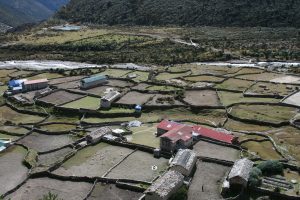
By 2010, a once-expanding infrastructure built by foreign assistance was crumbling: roads, government offices, clinics, schools, postal services, agriculture extension services, even tax collection. An increasingly corrupt government system could not maintain infrastructure that aid had built. Ancient divisions of caste and tribe persisted, crippling social advancement as half of the national population, women, still were only symbolically included in decision making.
In contrast to the failures of traditional development efforts, Nepal has had substantial success in local, community-based development efforts – though these have not been extensive enough to lift the entire country out of poverty and they have received far less support from both the Nepali government and external donors than traditional development efforts. Many of these efforts are ongoing.
Nepal is filled with such examples [of community based development]: community-based clinics and schools, forests, microcredit schemes, and water supply systems. Even more persuasive proof of people’s energies are the thousands of trails, temples, village waterspouts, and herculean terraces built without any external assistance… Another example of the diffuse, emergent manner in which the people pulled themselves forward lies in Nepal’s ecotourism industry.
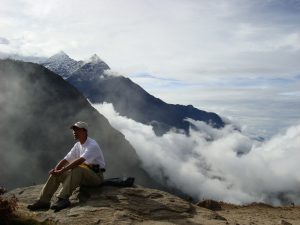
But these successes, outside of several select cases such as eco-tourism, have not been able to scale-up and are limited to local, grassroots initiatives.
Nepal is perhaps unusual in that although it has a record of failed traditional development – as many countries do – it simultaneously has a record of successful community based development which many countries do not.
Nepalis knows how to lift themselves out of poverty and advance their development.
SEED-SCALE has been well demonstrated in Nepal in a variety of contexts – from community-based road and bridge building efforts that have been high quality and extremely cost effective – with lasting benefit expanding trade and enabling improved travel for access to healthcare and markets to sell goods and services and produce grown in the countryside – to a sophisticated eco-tourism enterprise and range of extensive tourism related businesses incorporating tour guides, restaurants and hotels.
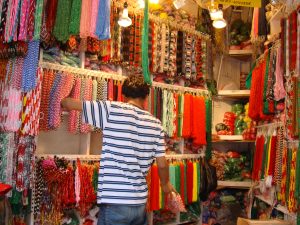
Many Nepalis have adapted to the opportunities provided by tourism to increase their income and use that income to improvetheir quality of life through better healthcare, housing, and educational opportunity.
While many of these programs have not been able to expand beyond largely localized programs, if the Nepali government on the national and regional level and foreign donors and aid agencies learn from the mistakes of the past and build on the successes of SEED-SCALE, Nepal will be able to advance its own development sustainably and successfully.
Then the community development that is currently taking place on a relatively small scale could eventually characterize the country as a whole for the better of all its citizens and contribute to equitable, expansive, participatory, and sustainable human development.
Development Series- Part II: Community Development from the Grassroots
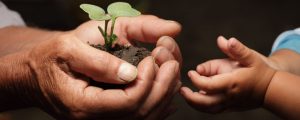
This week, we’re excited to announce that Professor Schimmel’s second post in the Development Series can be found on McGill University’s Centre for Human Rights & Legal Pluralism blog! Follow the link below to read his assessment on how the SEED-SCALE theory of social change can benefit the larger field of development.
https://www.mcgill.ca/humanrights/article/community-development-grassroots
Development Series- Part I: SEED-SCALE in Cities: Curitiba, Brazil
Summary from Just and Lasting Change by Associate Professor, Noam Schimmel

Patterns of human settlement are becoming increasingly urban and with these changes come both challenges and opportunities to advance human development.
Health Series- Part IV: Community-Based Development in Ding Xian, China
Summary from Just and Lasting Change by Associate Professor, Noam Schimmel
Go to the People.
Live with the People,
Learn from the People.
Plan with the People.
Work with the People.
Start with what they know,
Build on what they have.
Teach by showing, learn by doing.
Not a showcase, but a pattern.
Not piecemeal, but integrated.
Not odds and ends, but a system.
Not to conform, but to transform.
Not relief, but release.
-Jimmy Yen (yen Yangchu)
Health Series- Part III: Out of the Shadows: Women in Afghanistan
Summary of Just and Lasting Change- Chapter 13, by Associate Professor, Noam Schimmel
**Photos from various Future Generations activities in Afghanistan
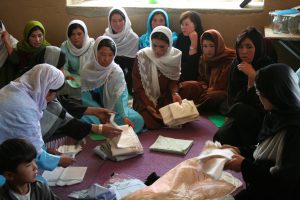
Behavioral change to advance health is often one of the most difficult aspects of the pursuit of development.
Health Series- Part II: Transformative Low Cost Healthcare
**Photos throughout the post are from Future Generations-affiliated CHW programs around India.

It is possible to provide life saving and life sustaining healthcare at an extremely low cost using well-trained non-professional community health workers.
Health Series- Part I: Communities and Government Learning to Work Together in Peru
__________________
Over the next several months, Equity & Empowerment will be releasing entries summarizing some of our earlier work to give a glimpse of the diversity of our organization and the versatility of the SEED-SCALE method which guides us. There will be 3 themed sets (series), and each set will consist of 4 entries. We hope you enjoy the first installment in our Health Series!
__________________

Original work by Laura Altobelli, Patricia Paredes, and Carl E. Taylor
Summary by Associate Professor, Noam Schimmel
SEED-SCALE illustrates how the most significant and sustainable achievements in community development typically result from a combination of bottom-up, top-down, and outside-in interventions. When these approaches work together, synergistically, they create a powerful framework for social change.
In Peru, in 1992, when the Shining Path terrorist group was defeated, villages in the Peruvian countryside looked to create healthcare programming that had been neglected during the many years of civil war and Shining Path attacks.
The Peruvian government was initially oriented towards a traditional top-down approach of bringing skilled doctors and other medical professionals to health centers located outside the villages, with the resulting high costs this would entail.
Mt. Kinabalu: A Borneo Gem
Text & Photographs by Dr. Robert L. Fleming
“Kinabalu can be rightly considered the botanical crown jewel of Borneo, but no short paper can even superficially cover all the gems.”
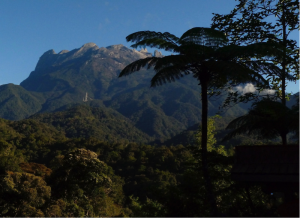
Mt Kinabalu, 4095m (13,435 ft) as viewed from near the Kinabalu Park headquarters at 1524m (5000ft)
Stars dimmed as people gathered in the dark on the summit of Mt Kinabalu to quietly await the dawn. If one has climbed the last 600 meters by flashlight, ascending ladders, and guided over the granite slabs by a pale rope that doubled as a handhold, the sunrise can be quite emotional. Those of us who reached the top early could see the dots of scattered flashlights moving slowly upwards. By the time the fluffy clouds below us glowed an orange-pink, a hundred or so people had gathered on Kinabalu’s 4095m, 13,435ft summit.
Mount Kinabalu is the highest peak in Borneo at 743 km2 (287mi2). Its summit is part of a batholith– a huge granite dome that formed deep within the earth’s crust. Then, some ten million years ago, tectonic activity forced the granite up through overlying sandstone and shale. Now, thousands of years later, these sedimentary layers have eroded away to leave a stunning granitic peak, which is among the youngest stand-alone, non-volcanic mountains in the world. And one that is still rising at an average rate of about 5mm a year with growth spurts often occurring during earthquakes, such as the 6.0 magnitude quake in 2015.
How to Equip Yourself to Make the Change You Wish to See
Greetings from the Western Hemisphere Alumni!
Although the Western Hemisphere Alumni group has the smallest number of members, we have by far the largest geographical area. Just look at a map! Western Hemisphere Alumni hail from North America, the Caribbean, Central America and South America, including Canada, the U.S., Nicaragua, Haiti, Guyana, Peru, and Bolivia. We speak English, Spanish, French, and quite a few localized languages, as well. This blog introduces a few of our very dynamic female alumni. A future post will introduce some of our male alumni.
Participatory Research and Plant Breeding in Honduras: Improving Livelihoods, Transforming Gender Relations
Did you know that Future Generations University regularly hosts live research seminars with development professionals of all backgrounds from around the world?
Check out the recording of February’s seminar below on participatory research and plant breeding in Honduras, and learn how its being used to improve livelihoods while transforming gender roles!
Follow us on Facebook to keep posted on the dates of upcoming seminars and for information on how to join in!
This seminar is presented by Dr. Sally Humphries, Associate Professor, Sociology and Anthropology at the University of Guelph in Ontario.
_____________________________________
Alumni Update: Anthony Kadoma
In 2014, Anthony implemented a project on developing guidelines for disseminating practicum findings at the community level. During this project, practicum findings on the topic “Adapting Poverty Reduction Strategies at Individual, Household and Community Level: Practicum Research Conducted in Nyamanga Parish, Bufunjo Sub-county in Kyenjojo district, Western Uganda” were presented to the community members.
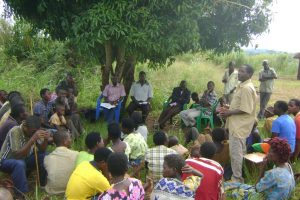 |
| Listening attentively to issues raised by local community members. |
Holiday Greeting from the President of Future Generations University
Meet Kelli Fleming: Future Generations University’s new Assistant Professor and Director of Learning Management!
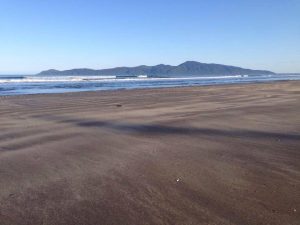 The removal of mandatory residentials, Kelli notes, changes where the teaching energy goes. She will help maximize online activities so that they remain inviting for students. It’s important in a blended platform like ours that someone be in place to keep that energy going. Some keys to this will be in the development of new teaching artifacts, implementation of effective online simulations, and by keeping up the engagement in online forums.
The removal of mandatory residentials, Kelli notes, changes where the teaching energy goes. She will help maximize online activities so that they remain inviting for students. It’s important in a blended platform like ours that someone be in place to keep that energy going. Some keys to this will be in the development of new teaching artifacts, implementation of effective online simulations, and by keeping up the engagement in online forums. Practicing Conflict Management & More in Africa
Jonathan’s Background with Future Generations:
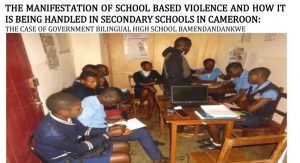 |
| Jonathan’s Master’s Practicum Thesis |
Recently, I carried out a project with the support of Future Generations University called Promotion of Peace Awareness Among Youths in Cameroon. More information on this work can be found on the Facebook page of the Cameroon Youth Partnership (www.facebook.com-cameroon-youth-partnership). This project was funded by the Davis Projects for Peace, USA and was carried out in 2015.
 |
|
Nexus Fund builds & strengthens local
communities to help prevent mass attrocities
|
I completed another related project in March of 2017, entitled “Deconstructing the Terrorist Narrative among Young People in Cameroon,” funded by the Nexus Fund, USA. We came out of it with findings indicative of the process of radicalization of young people in Cameroon and produced the working document “Youth De-Radicalization Compendium.”
Liberia:
Cameroon:
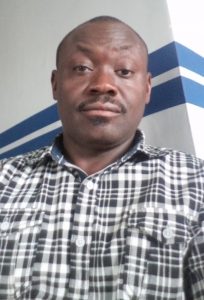 This week’s blog was contributed by Jonathan Tim Nshing, a member of Future Generations University’s Class of 2015. As a school counselor by training, Jonathan has over thirteen years of service, having worked with schools, youth groups and local communities in the North West Region of Cameroon. It is also important to note that Jonathan is the founder of the Cameroon Youth Partnership. Cameroon Youth Partnership is a community-based organization aimed at the empowerment of young people through offering them information and counseling on youth related issues such as jobs, sexuality, HIV/AIDS, drug abuse, peace advocacy, and fighting violence in all its forms.
This week’s blog was contributed by Jonathan Tim Nshing, a member of Future Generations University’s Class of 2015. As a school counselor by training, Jonathan has over thirteen years of service, having worked with schools, youth groups and local communities in the North West Region of Cameroon. It is also important to note that Jonathan is the founder of the Cameroon Youth Partnership. Cameroon Youth Partnership is a community-based organization aimed at the empowerment of young people through offering them information and counseling on youth related issues such as jobs, sexuality, HIV/AIDS, drug abuse, peace advocacy, and fighting violence in all its forms. CONTACT INFORMATION
Graduation Reflections
 And the climax of the residential? Celebrating the graduation of students who, after 20 months of hard work, earned their MA in Applied Community Change. In a ceremony highlighting student diversity and unity, each of the regional cohorts chose a speaker and a song to share. Zerihun Damenu, Director of IIRR’s Ethiopia country program, spoke for the Africa Cohort followed by the song Africa Unity presented by all 12 students representing Ethiopia, Uganda, Sudan, Somalia, and Ghana. Mone Gurung, Program Coordinator for Future Generations Arunachal, spoke for the Himalayan Cohort, followed by the Nepali song Hami Bikaska Sahajkarta Haun (We are development facilitators) powerfully led by Bhim Nepali and accompanied by other Indian (from Arunachal Pradesh) and Nepali students. Ashley Akers of West Virginia represented the Appalachian Cohort with her speech and signing of a portion of Martin Luther King Jr.’s “moving forward” speech: “If you can’t fly then run, if you can’t run then walk, if you can’t walk then crawl, but whatever you do you have to keep moving forward.” Country Roads was appropriately chosen as the Appalachian student song but was given an international flair with students and faculty from around the globe joining in.
And the climax of the residential? Celebrating the graduation of students who, after 20 months of hard work, earned their MA in Applied Community Change. In a ceremony highlighting student diversity and unity, each of the regional cohorts chose a speaker and a song to share. Zerihun Damenu, Director of IIRR’s Ethiopia country program, spoke for the Africa Cohort followed by the song Africa Unity presented by all 12 students representing Ethiopia, Uganda, Sudan, Somalia, and Ghana. Mone Gurung, Program Coordinator for Future Generations Arunachal, spoke for the Himalayan Cohort, followed by the Nepali song Hami Bikaska Sahajkarta Haun (We are development facilitators) powerfully led by Bhim Nepali and accompanied by other Indian (from Arunachal Pradesh) and Nepali students. Ashley Akers of West Virginia represented the Appalachian Cohort with her speech and signing of a portion of Martin Luther King Jr.’s “moving forward” speech: “If you can’t fly then run, if you can’t run then walk, if you can’t walk then crawl, but whatever you do you have to keep moving forward.” Country Roads was appropriately chosen as the Appalachian student song but was given an international flair with students and faculty from around the globe joining in.
 Christie is committed to ensuring that higher education is relevant and accessible to all. The benefits and opportunities available through education should not be for a select few. Towards this end, she is enthusiastic about trying new models and approaches which help to increase the reach of higher education and enable greater success. Her style is that of facilitation, empowering students to take responsibility for their own learning, and becoming life-long learners. Christie has been working at Future Generations University since 2007.
Christie is committed to ensuring that higher education is relevant and accessible to all. The benefits and opportunities available through education should not be for a select few. Towards this end, she is enthusiastic about trying new models and approaches which help to increase the reach of higher education and enable greater success. Her style is that of facilitation, empowering students to take responsibility for their own learning, and becoming life-long learners. Christie has been working at Future Generations University since 2007.
The Future and the Appalachians
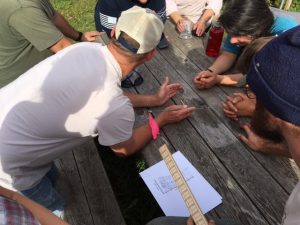 |
| Class members on the first day of the Sap Collection Residential |
You can start by looking at what works, and build on that success. You can replace the energy found in coal with the human energy to innovate. You can develop partnerships between not-for-profits, government and people eager to see change. If that sounds like part of the mantra of Future Generations University; well, that’s because it is. And maybe that’s why West Virginia’s newest University just might be in the “sweet spot” when it comes to the future and the Appalachians.
 |
| Participant Karen Milnes measuring trees with a diameter tape |
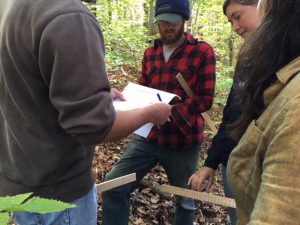 |
| Crew members recording plot data |
 |
| Alisha and Baby Oriana making use of a Biltmore Stick |
____________________________________________________
 Mike Rechlin has practiced sustainable foresty and protected areas management in the United States, Nepal, India, and Tibet for thirty years. He has extensive teaching experience and has designed educational programs for many international groups visiting the Adirondack Park of New York State. Presently retired, Mike has held academic appointments at Principia College, Paul Smith’s College, and the Yale School of Forestry and Environmental Studies. He served as the dean of Future Generations Graduate School from 2010 to 2013. He presently resides, and makes maple syrup, in Franklin, WV.
Mike Rechlin has practiced sustainable foresty and protected areas management in the United States, Nepal, India, and Tibet for thirty years. He has extensive teaching experience and has designed educational programs for many international groups visiting the Adirondack Park of New York State. Presently retired, Mike has held academic appointments at Principia College, Paul Smith’s College, and the Yale School of Forestry and Environmental Studies. He served as the dean of Future Generations Graduate School from 2010 to 2013. He presently resides, and makes maple syrup, in Franklin, WV.
Alumni Feature: Meaghan Gruber
Happy Dashain from Future Generations!
A greeting from Himalayan Regional Academic Director and Assistant Professor, Mr. Nawang Singh Gurung:
Musings of a Naturalist IV: Loango: An Elephant Eden
 |
|
We rounded a bend in a small outboard to suddenly surprise a
Forest Elephant, Loxodonta cyclotis, feeding on a grassy peninsula
poking into the slow-moving Rembo Ngowe river. While this animal
did not show alarm, it did stop eating and slowly backed into the forest.
The white bar at the lower left-hand edge of this picture shows the rim
of our boat and indicates how close we were to this magnificent creature.
|
Any thought of elephants immediately brings to mind the grim straits that the Forest Elephant and all elephant species face. Elephants need space but with habitat loss and fragmentation this is a fast diminishing commodity. Besides space, rampant poaching is a dire on-going threat that will be eliminated only when human needs are adequately met and when there is no market for ivory – or bush meat. There are many on-going efforts to deal with poaching so we retain the hope that elephants will indeed survive in the wild.
Gabon had received little conservation attention and Loango was almost unknown until zoologist Michael Fey’s well-publicized on-foot transect across the Congo Basin, a journey that ended in Loango in 2000. With Longo now on the map, the forward thinking prime minister, Omar Bongo, created the National Agency for National Parks in 2002, and this body decided to protect thirteen areas of special biological interest as national parks. These now occupy ten percent of Gabon’s land area.
While elephants, as a charismatic group, attract special conservation interest, their protection and the retention of their habitat also benefits many other species which, in Gabon, includes Lowland Gorillas, Chimpanzees, Red River Hogs, African Gray Parrots, and Slender-snouted Crocodiles, all indicator species of the Congo Rainforest Biome. And also benefitting from habitat protection are Giant Kingfishers, Palm-nut Vultures, and the African Rock Python, species I had previously encountered in other areas of Africa – but never in these numbers.
 |
| The Red River Hog, Potamochoerus porcus, is one of 19 species is the family Suidae. These hogs search the forest floor in tropical rainforests of West Africa and are found from the Congo Basin west to Guinea. Their preferred habitat is good forest as well as open edges of streams and marshes where they search for tubers, fruit fallen from trees, and even carrion. In addition they look for the balls of forest elephant feces which they break apart to feed on the undigested seeds of trees such as Balanites wilsoniana. While Wild Red River Hogs usually roam in small groups of up to ten animals, the large assemblages seen in Loango indicates fine habitat and good protection. |
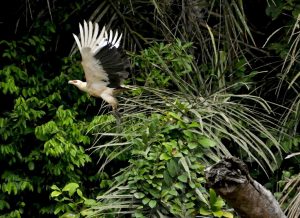 |
| The Palm-Nut Vulture (Gypohierax angolensis), a raptor primarily of wet equatorial forests in western Africa, might best be called a vulturine eagle for its head is totally feathered, save for red facial skin, and the bird features acrobatic aerial courtship displays, rolling and diving. Besides the bird sometimes attacks living prey, occasionally picking disabled fish off the surface of the water or eyeing the occupants of a chicken coop. This vulturine eagle does feed on carrion but its primary food source is nuts of Elaeis and Raphia palms. |
 |
| On occasion, most crocodiles like to haul out of the water to spend time on dry land. However, few exposed banks exist along the Mpivie or other rivers in lowland Gabon, so Slender-snouted reptiles often clamber up trunks of dead trees fallen into the river. |
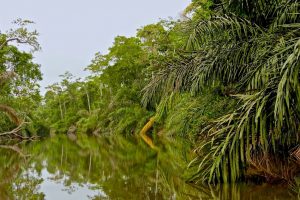 |
|
The slow-moving, shaded Mpivie River is ideal habitat for Slender-snouted Crocodiles as it supports a splendid fish population and there is ample shade from the Eleias palms and other trees lining the channel. This habitat is also much favored by kingfishers as well as the African Finfoot and the large, Pell’s Owl, both rare bird species.
|
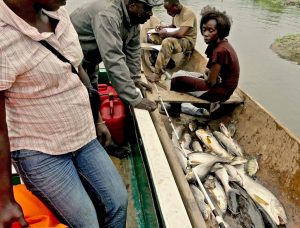 |
|
Much of the terrain inland from Gabon’s southern Atlantic coast features a mosaic of lagoons and waterways, and the people living here are masterful fishermen. Hunting in Loango National Park is not permitted but fishing for local consumption is allowed, the operations supervised by park authorities. This mid-afternoon image shows a park ranger recording the ‘take’, which includes catfish and other freshwater species while staff from the Akaka tented camp bargain for dinner.
|
 |
|
Pictured is Dr. Fleming with a staff member of
Loango Lodge; the photo was taken on‘Gorilla Island’ near the
Loango National Park where there is a rehab center for rescued gorillas.
|
This week’s blog piece and photos make up the fourth installment in our Musings of a Naturalist series, courtesy of our own Dr. Robert (Bob) Fleming: Professor Equity and Empowerment/ Natural History. Having grown up in the foothills of the Himalayas in India, Bob has long been interested in the beauty of nature. This progressed into a fascination with natural history and cultural diversity, leading him to obtain his Ph.D. in zoology. He has explored many of the planet’s special biological regions, ranging from the Namib Desert in Africa to the Tropical Rainforest of the Amazon, and the Mountain Tundra biome of the Himalayas. He has worked for the Smithsonian’s Office of Ecology and the Royal Nepal Academy and, along with his father and Royal Nepal Academy Director-Lain Singh Bangdel, he wrote and illustrated “Birds of Nepal,” the first modern field guide to the birds of the region. In addition to his work with Future Generations, Bob is the director of Nature Himalayas, a sole proprietorship that he began in 1970. Through this company, Bob has led some 250 outings. He currently lives in the temperate rainforest of western Oregon in the USA’s Pacific Northwest.
Many thanks to Dr. Fleming for another great contribution!
Using the SEED-SCALE Model to Assess Access to Education in Engikaret, Tanzania
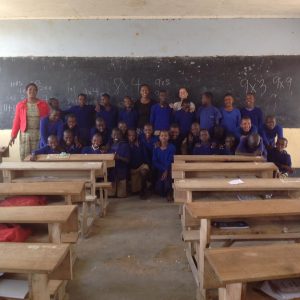 |
|
7th Year Students at ECPS.
Core Teachers: Sion and Priska.
Guest Teacher:Taylor |
Introduction
Principle One: Rising Aspirations Lead to Action
The Maasai of Engikaret live in a resource-poor and geographically isolated area, with an estimated population of 4,000. While resistant to overt cultural change, I found the Maasai of Engikaret open and willingly promote formal education as a means to generate opportunities within the community. The community’s openness to supporting formal education (such as enrollment in primary school) reflects Principal One of the SEED-SCALE model, which asserts that when promoting sustainable community programs, such as access to education, assessment leading to action should begin with evaluating the strengths of the community.
Within these strengths, I could see the hopes and dreams of parents wanting their youth to have the opportunity to attend primary school. As evidence, Engikaret has two primary schools. New Vision Primary School is a privately funded, faith-based school whereas Engikaret Community Primary School (ECPS) is a government funded, public school. While there are resource discrepancies between the two schools, the focus of my observations leads me to conclude that within the larger community context, there is a community-driven want to provide access to education for the youth of the area. Further, within the parameters of Principle One, is the need to assess how communities understand education as it relates to community health and well-being.
Officially, the community supports education, at least through the primary grades for the majority of the community’s children. I gleaned this informal information through participation in multiple Maasai community discussions. I had ample opportunities to meet with the mamas of Engikaret, who repeatedly stated that they want their children, regardless of gender, to be in school. While the position presented by the mamas highlights how the Engikaret Maasai have embraced social change through the verbal promotion of education, it is of interest that there are school-aged youth, primarily girls, who are not enrolled in either of the community’s primary schools. This observation led me to inquire about the rates of girl to boy enrollment within the public school system of Engikaret. Interviews with the public school teachers confirmed that more males are enrolled and supported in school attendance than girls. Perhaps this reflects traditions that “might create obstacles to healthy change.”
Evaluating challenges to healthy change does not mean to focus on the negative; rather Principle One acknowledges that when assessing community strengths one should not “ignore problems.” I suspect part of the reason for lower girl enrollment stems from the Maasai’s traditional gender roles. Traditional expectations of Maasai women are focused on marriage, child rearing, and home duties rather than on building gender equality through access to education. It is not to say the community does not embrace healthy change– from my observations of the Level Seven class at ECPS, I saw more female students enrolled than I had initially expected. Within the Level Seven class ,I calculated 43% of students were female, compared to 57% male. This data reflects a 23% increase in girl enrollment rates within the last generation.
 |
| Mamas of Engikaret |
Principle Two: Three-way Partnerships and Malleable Leadership
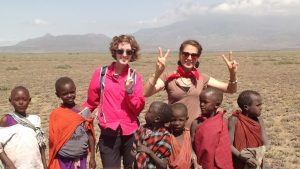 |
| Maasai children herding after school and before the enrollment age of 7. NAU students: Aubrey Babcock and Taylor Lee |
Principle Three: Assessing Social Change through Community Perspectives
Conclusion
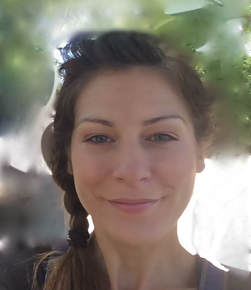 This week’s blog contributed by Taylor Lee. Taylor has a passion for promoting equitable education in underserved communities, and is currently teaching in rural Arizona with predominantly Navajo youth. While her work is focused on delivering access to high quality science education at the middle grades, embedded within her classroom work is providing youth and families with meaningful experiences that inspire students to seek post-secondary opportunities. She believes that the cycle of poverty, often associated with under-resourced communities, can be broken when youth have equitable post-secondary options readily available. She works in collaboration with community partners to provide such pathways to her students through exposure at the middle grades level.
This week’s blog contributed by Taylor Lee. Taylor has a passion for promoting equitable education in underserved communities, and is currently teaching in rural Arizona with predominantly Navajo youth. While her work is focused on delivering access to high quality science education at the middle grades, embedded within her classroom work is providing youth and families with meaningful experiences that inspire students to seek post-secondary opportunities. She believes that the cycle of poverty, often associated with under-resourced communities, can be broken when youth have equitable post-secondary options readily available. She works in collaboration with community partners to provide such pathways to her students through exposure at the middle grades level.
Equip Yourself to Make the Change You Wish to See
 |
|
Gandhi’s ashram in Sevagram, India– participants in the certificate course Equip Yourself to Make the Change You Wish to See spend part of their course time here for an in-depth learning experience
|
Mahatma Gandhi coined the term swaraj (literally, self-rule, though he preferred to translate it as self-control) to describe the growing capacity of a population to determine its future. Gandhi was in South Africa at the time, and the idea of people rising up with internal nonviolent energy for political independence was a new concept in the world. His idea was that people could take control of their own destiny through taking control of the most basic functions of life. Colonialism was a loss of control, but so too was poverty, caste, and illness. From taking control over lives came true freedom; it allowed people to own their futures.
The Mahatma was not was not internationally recognized when he came to believe in swaraj. He wasn’t even in India or thinking of the independence of India, but wanted to improve a few lives in an intentional community on a very marginal piece of land in South Africa. What would grow into a freedom movement for one-fifth of the world’s population, indeed launch all the freedom movements of the 20th Century, began on a marginal piece of land and freedom for a few.
 Swaraj gave part of the answer, “a morality based in Truth” he often called it, a way by which people could define their destiny. His concern as his awareness grew was not simply opposition to the British Empire, but to the discrimination and poverty which underlay oppression. Fundamental social change was the objective, and the physical context for this control of destiny was the sparse land of his utopian South African Phoenix Colony. These then seeded an idea that would scale up into one of the world’s most powerful forces.
Swaraj gave part of the answer, “a morality based in Truth” he often called it, a way by which people could define their destiny. His concern as his awareness grew was not simply opposition to the British Empire, but to the discrimination and poverty which underlay oppression. Fundamental social change was the objective, and the physical context for this control of destiny was the sparse land of his utopian South African Phoenix Colony. These then seeded an idea that would scale up into one of the world’s most powerful forces.
In some of his writing after the movement had started to expand in India, Gandhi expanded the term to gram swaraj, which is community-based freedom. Gram swaraj generates sustaining energy for the community from inside and with it self-correcting direction. It is inspired and regulated by satyagraha, the energy of Truth. Gandhi argued that the true forces that bring change in the lives of people come not from the marketplace, not from armies, not from a religion, not from political process, but from knowledge of Truth that is internalized and adhered to so that it continually corrects action. These forces that begin inside each individual then redefine society to bring authentic help to all people.
His spinning wheel visibly conveyed this message on the importance of process and the search for Truth. Each individual turning his or her wheel gave evidence of self-potential and direction. The act of spinning used resources grown in that place, locally-grown cotton, locally-grown wood that made the wheels. When people wore khadi cloth they showed proof that a becoming life could be made by them. Done collectively, homespun khadi showed that India could weave a new life, using threads of local resources from one direction, massive energy of the villages from the other. Actually wearing these clothes of their own making as flags of self-reliance as they marched, India’s people gave evidence that they were dressing in a new way: their way. Do that, and from that other freedoms will grow. Swaraj was to strengthen India with tightly wound new fiber to pull apart deep forces of oppression: caste, poverty, ignorance, fear of leprosy, and gender discrimination.
Today, as military powers send soldiers to distant lands to free people and label the liberators “peacemakers,” and as corporations are freed to cross the world for cheap labor arguing that they create local development by creating jobs that bind people to global labor imbalances, the question must be asked (even if it cannot be answered): what is freedom? While freeing people from oppression and providing jobs are both freedoms, going toward freedom in the way that “peacemakers” and corporations pursue misses a core principle that guided Gandhi: that truth was in the process, the never-ending journey faithful to the operating principles.
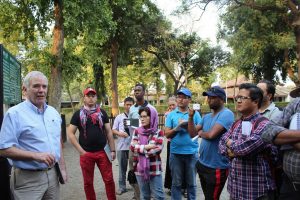 |
| Professor Taylor teaching Gandhi’s methods of social change at the Mahatma’s ashram in Sevagram, India |
Freedom is not given to people. Freedom is when people come together as communities to rule themselves. Joining together as communities not only liberates from these outside forces, but also it grows a momentum that, in his vision, would reach all. His was a vision for a new justice through new means: “If we are to make progress, we must not repeat history but make new history. We must add to the inheritance left by our ancestors.”
Inarguably, significant differences exist now than those present in people’s lives in Gandhi’s day. As such, it is helpful to focus just on that which Gandhi viewed as foundational: Truth. With information and instant access to anything people want to hear—information is awash now over the world pummeling people with falsehoods and facts. The worship of Truth is possibly more essential now than in Gandhi’s time. The response needed is not to abandon the quest and turn to fundamentalisms and black and whites, but to work with all the nuance that of how what is true in one locale is not in another, how what is true from one person’s perspective is not from another’s. Truth is understood through having a process to engage the facts and falsehoods. And so, a more complex set of principles is needed. To unpack in greater detail the principles Gandhi actually did use; we state them in the context of SEED-SCALE’s four principles:
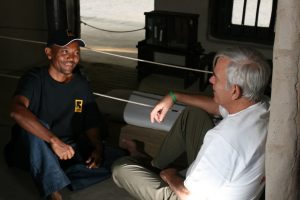 We can all still take inspiration from his perseverance and learn the lessons he left behind in his philosophy and methods. The application is timeless and invaluable in preventing history from repeating itself. By participating in Future Generations certificate course, “Equip Yourself to Make the Change You Wish to See,” you can learn Gandhian social change methods right where the Mahatma himself taught them to his followers, at his Sevagram ashram in central India.
We can all still take inspiration from his perseverance and learn the lessons he left behind in his philosophy and methods. The application is timeless and invaluable in preventing history from repeating itself. By participating in Future Generations certificate course, “Equip Yourself to Make the Change You Wish to See,” you can learn Gandhian social change methods right where the Mahatma himself taught them to his followers, at his Sevagram ashram in central India.
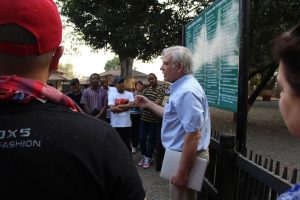 This week’s blog contributed by Future Generations founder and current president and professor, Daniel Taylor. Daniel has been engaged in social change and conservation for four decades with a focus on building international cooperation to achieve ambitious projects. He founded the nine Future Generations organizations worldwide (including the accredited Future Generations Graduate School). He also founded and led The Mountain Institute. In 1985, after providing the scientific explanation for the yeti, he led creating Nepals Makalu-Barun National Park, then, in close partnership with the Tibet Autonomous Region, Chinas Qomolangma (Everest) National Nature Preserve and Four Great Rivers Nature Preserve protecting one-seventh of Chinas forest reserves. He is one of the synthesizers of the SEED-SCALE method, an understanding of social change initiated by a UNICEF task force he co-chaired from 1992-95. Since 1995 he continued to lead global field trials of SEED-SCALE and is senior author of Just and Lasting Change: How Communities Can Own Their Futures and Empowerment: From Seeds of Human Energy to a Scale of Global Change. Among his honors, Taylor was knighted by the King of Nepal Gorkha Dakshin Bau III; was made the first Honorary Professor of Quantitative Ecology of the Chinese Academy of Sciences; and was decorated with the Order of the Golden Ark by HRH Prince Bernhard of The Netherlands.
This week’s blog contributed by Future Generations founder and current president and professor, Daniel Taylor. Daniel has been engaged in social change and conservation for four decades with a focus on building international cooperation to achieve ambitious projects. He founded the nine Future Generations organizations worldwide (including the accredited Future Generations Graduate School). He also founded and led The Mountain Institute. In 1985, after providing the scientific explanation for the yeti, he led creating Nepals Makalu-Barun National Park, then, in close partnership with the Tibet Autonomous Region, Chinas Qomolangma (Everest) National Nature Preserve and Four Great Rivers Nature Preserve protecting one-seventh of Chinas forest reserves. He is one of the synthesizers of the SEED-SCALE method, an understanding of social change initiated by a UNICEF task force he co-chaired from 1992-95. Since 1995 he continued to lead global field trials of SEED-SCALE and is senior author of Just and Lasting Change: How Communities Can Own Their Futures and Empowerment: From Seeds of Human Energy to a Scale of Global Change. Among his honors, Taylor was knighted by the King of Nepal Gorkha Dakshin Bau III; was made the first Honorary Professor of Quantitative Ecology of the Chinese Academy of Sciences; and was decorated with the Order of the Golden Ark by HRH Prince Bernhard of The Netherlands.
Cultural Poverty Reduction as a Strategic Policy
Future Generations University believes in the importance of supporting its alumni and creating a community of changemakers. It is for this reason that Future Generations Global Network awards a number of collaboration grants every year for which alumni can apply to implement projects that embody our philosophy and demonstrate the SEED-SCALE method. This week, we hear from Rohan Sagar and Suzanne Munro, who received one of these grants in 2016 to fund their research into cultural poverty reduction…
The Cultural Poverty Reduction as a Strategic Policy project funded by Future Generations Global Network was a response to the ethnic and social landscape of Guyana. This project was conceptualized and implemented by two alumni, Rogan Sagar and Suzanne Munro, of Future Generations University (then the Graduate School), Class2014. The project implementation period commenced in August and concluded December2016, and was built around three main components: (a) Research, (b) Applied Ethnomusicology, and (c) Observations, which was an application of Evolutionary Psychology. Essentially, the project as a research praxis validated the main hypothesis encompassing ethnic and race relations and the outcomes validated the application of Applied Ethnomusicology as a possible bridge between present political structural policies and a culturally based epistemic.
 Our research component sought to establish a baseline of cultural knowledge bymeasuring depreciation (of fixed variables or not known by the respondent). According to research articles on Evolutionary Psychology and Music Psychology,”‘music is the main marker upon which identity is constructed.‘” Therefore, according to the research objectives, the level of knowledge of ethnic based traditional musics will be an indicator of the broader levels of cultural knowledge. The data is clear that interethnic as well as intra–ethnic cultural awareness exists at very low levels, with less than25% of the respondents actually aware of their own ethnic identity constructs. The majority of the respondents(75%) also indicated lack of awareness of the identity of specific cultural tools indigenous to their specific social group, and could not relate to indigenisable sonic designs. In Evolutionary Psychology this phenomenon could be referred to ‘psychophysical’ and provides a referential marker located in the absence of being rooted within one’s own identity; this response then became a referential point of departure to locate from the respondents own experiences their relationships to other groups.
Our research component sought to establish a baseline of cultural knowledge bymeasuring depreciation (of fixed variables or not known by the respondent). According to research articles on Evolutionary Psychology and Music Psychology,”‘music is the main marker upon which identity is constructed.‘” Therefore, according to the research objectives, the level of knowledge of ethnic based traditional musics will be an indicator of the broader levels of cultural knowledge. The data is clear that interethnic as well as intra–ethnic cultural awareness exists at very low levels, with less than25% of the respondents actually aware of their own ethnic identity constructs. The majority of the respondents(75%) also indicated lack of awareness of the identity of specific cultural tools indigenous to their specific social group, and could not relate to indigenisable sonic designs. In Evolutionary Psychology this phenomenon could be referred to ‘psychophysical’ and provides a referential marker located in the absence of being rooted within one’s own identity; this response then became a referential point of departure to locate from the respondents own experiences their relationships to other groups.
To understand and diagnose the openness or receptivity of respondents to multiculturalism and multiethnic universals, the project relied on the principles of Applied Ethnomusicology. Here the process was guided by the alumni and two facilitators: Mr. Somdatt Ramessar and Mr. Handel Neptune. The scope of this component was confined to observation and was tested on the youth demographic. According to new studies on music and its impact on the brain, specific rhythms and melodic designs usually generate psychophysical indicators on which was premised the main hypothesis. What both the investigators and facilitators noted was the presence of genuine positive reactions to rhythms and melodic designs that could be defined as both indigenous and endogenous. We found this behavior not to be surprising given the existence of evidence of cosmopolitanisation within Guyanese society. Two percussive rhythmic pieces identifiable to two ethnic groups, Africans and East Indians, the Patois Hand and Keherwa Taal or(8 beats) as well as two vocal materials, Ba Ta Taa and Harey Krishna were used in this exercise . Additionally, the Amerindian percussion instrument, the Sambura, was used to interconnect as a part of the overall orchestral arrangements.
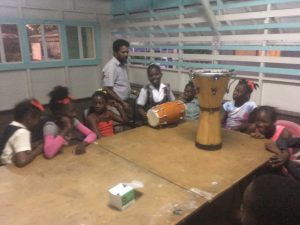 What the researchers and facilitators did note as an interesting find was the dichotomy between the research findings (the less than25% knowledgeable marker) and the observational high ratio positive response. The research seems to suggest that the demographic in question, the youth, seems to be more susceptible to endogenisation, a process likely to have generated greater traction outside of their primary place of habitat. What is yet to be discerned is the impact of this endogenous experience within ethnic enclaves, additionally the research protocol did not address or clarify this fundamental question. Guyana is often called the ‘land of six races’ which is often a source of pride and is a benchmark used to establish comparative distinctiveness between the high levels of co–existence here in Guyana and ethnic or race based conflicts universally. From the Amerindians, who it is scientifically accepted were the first settlers in this part of the world, to the other four ethnic groups who were forced migrants as a consequence of European colonial adventures and conquest, Guyanese have found a unique method to co–exist.
What the researchers and facilitators did note as an interesting find was the dichotomy between the research findings (the less than25% knowledgeable marker) and the observational high ratio positive response. The research seems to suggest that the demographic in question, the youth, seems to be more susceptible to endogenisation, a process likely to have generated greater traction outside of their primary place of habitat. What is yet to be discerned is the impact of this endogenous experience within ethnic enclaves, additionally the research protocol did not address or clarify this fundamental question. Guyana is often called the ‘land of six races’ which is often a source of pride and is a benchmark used to establish comparative distinctiveness between the high levels of co–existence here in Guyana and ethnic or race based conflicts universally. From the Amerindians, who it is scientifically accepted were the first settlers in this part of the world, to the other four ethnic groups who were forced migrants as a consequence of European colonial adventures and conquest, Guyanese have found a unique method to co–exist. 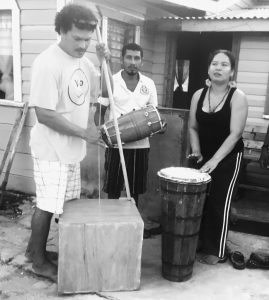 Out of this condition arose evidences of homogenous and heterogeneous communities, mix marriages and relationships, and the interethnic experimentation with the phenomenon, creolization. Creolization was for all intents and purposes a grassroots learning process when ethnic groups were forced to coexist, not deliberatively, but through the many life sustaining mechanisms, and knowledge and awareness essentially blossomed so that each one got to know the ‘other’ culturally. Some of these phenomena include social concepts as weddings, celebration of births and deaths, commerce, as well as sharing other ecological spaces. As Guyana progressed towards Independence political self–governance awareness was gaining traction amongst the citizenship and in1953 Guyana elected its first form of self–government after winning universal suffrage. But in1962-4 Guyana entered into a dark period as the country descended into civil unrest and riots, largely as a consequence of the fracture of the then single largest political party along ethnic lines.
Out of this condition arose evidences of homogenous and heterogeneous communities, mix marriages and relationships, and the interethnic experimentation with the phenomenon, creolization. Creolization was for all intents and purposes a grassroots learning process when ethnic groups were forced to coexist, not deliberatively, but through the many life sustaining mechanisms, and knowledge and awareness essentially blossomed so that each one got to know the ‘other’ culturally. Some of these phenomena include social concepts as weddings, celebration of births and deaths, commerce, as well as sharing other ecological spaces. As Guyana progressed towards Independence political self–governance awareness was gaining traction amongst the citizenship and in1953 Guyana elected its first form of self–government after winning universal suffrage. But in1962-4 Guyana entered into a dark period as the country descended into civil unrest and riots, largely as a consequence of the fracture of the then single largest political party along ethnic lines.In their conclusion the Cultural Poverty Reduction, project leaders wish to reiterate that the cultural policy research paper was designed and built in accordance with the 7 Tasks of the SEED–SCALE research method; the full research paper was submitted for publication in a peer-reviewed academic journal; other visual materials are also available on the first author’s website: www.socio–historicalethnomusicology–GUYANA.com. The project leaders wish to thank Future Generations Global Network for its support to help realize this project; additionally, project implementers are pleased to facilitate greater awareness of Future Generations University and its work worldwide.
 Rohan Sagar read for his Master’s Degree at Future Generations University, in his thesis he argued for a multicultural approach to music education in Guyana where he resides. Rohan is also an ethnomusicologist presently conducting investigations in the traditional musics of Guyana amongst the Native American, African and East Indian populations. His most recent project was research assistant to the Evolutionary Psychology project with Harvard University.
Rohan Sagar read for his Master’s Degree at Future Generations University, in his thesis he argued for a multicultural approach to music education in Guyana where he resides. Rohan is also an ethnomusicologist presently conducting investigations in the traditional musics of Guyana amongst the Native American, African and East Indian populations. His most recent project was research assistant to the Evolutionary Psychology project with Harvard University.
 Suzanne Munro is a graduate from the University of Guyana, where she studied Environmental Studies. Further development of her education took place in the obtaining of a Masters Degree in Community Change and Conservation through the Future Generations Graduate School. Ms. Munro has worked at Conservation International (CI) for over 10 years, where she focuses on grants management, community development, and conservation. Currently, she is with the Government of Guyana as a Procurement Specialist working under the Forest Carbon Partnership Facility (FCPF). When not at work, she is active in a small group of women that focuses on early exposure and availability to reading in young children.
Suzanne Munro is a graduate from the University of Guyana, where she studied Environmental Studies. Further development of her education took place in the obtaining of a Masters Degree in Community Change and Conservation through the Future Generations Graduate School. Ms. Munro has worked at Conservation International (CI) for over 10 years, where she focuses on grants management, community development, and conservation. Currently, she is with the Government of Guyana as a Procurement Specialist working under the Forest Carbon Partnership Facility (FCPF). When not at work, she is active in a small group of women that focuses on early exposure and availability to reading in young children.How Do Communities Experience Peace in Their Daily Lives? Future Generations Researchers in Eight Countries Went to Find Out!
Summary
 |
|
This map shows the eight countries where research into Everday Peace
Indicators was conducted.
|
Background
In January 2017, researchers in eight countries (Afghanistan, Ethiopia, Guyana, Nepal, Nigeria, Somaliland, South Sudan, and Uganda) set out to understand how urban and rural communities as well as local peacebuilding experts experience and determine that they can measure peace in their everyday lives.
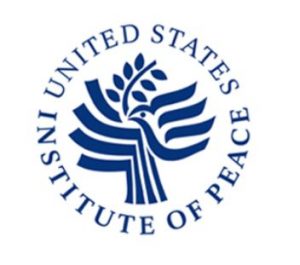 Typically, methods used to study peace yield complex, scholarly results that are not directly relevant, useful, or sometimes even intended for communities to understand. Through development of ‘indicators of peace,’ this project, through local participation and local ownership, seeks to produce sensitive local understanding of interventions in peacebuilding and conflict transformation. The assertion is that communities are best placed to measure and interpret their own peace. The research methodology builds on prior and ongoing research on Everyday Peace Indicators (EPIs) at the United States Institute for Peace (USIP).
Typically, methods used to study peace yield complex, scholarly results that are not directly relevant, useful, or sometimes even intended for communities to understand. Through development of ‘indicators of peace,’ this project, through local participation and local ownership, seeks to produce sensitive local understanding of interventions in peacebuilding and conflict transformation. The assertion is that communities are best placed to measure and interpret their own peace. The research methodology builds on prior and ongoing research on Everyday Peace Indicators (EPIs) at the United States Institute for Peace (USIP).
As lead researchers on prior EPI work—Pamina Firchow and Roger Mac Ginty—describe this approach as:[i]
Methods
This study included focus group discussions in at least two sites in each country. The sites were selected to represent urban and rural contexts within the country and were selected based on communities where our research team had connections and was able to establish and build on trusting relationships in order to undertake this participatory research. A total of 20 sites are represented in the study findings including four sites in Guyana and four sites in Afghanistan and two in each of the other countries.
At each site, focus groups were held separately with men, women, boys and girls—expect in Nepal where the men and women were divided into two groups each based on caste and youth were merged into one group for each site in order to be responsive to social norms and ensure an in-depth, productive dialogue. The purpose of these focus groups was to hold an open brainstorming discussion with each of these demographic groups in each community about how they experience peace—first very broadly and then progressively honing in on tangible and then countable things from their everyday lives that could indicate whether their community was becoming more or less peaceful over time. A total of 80 focus groups were held across the 20 sites.
After the initial focus groups were completed, the researcher(s) at least site compiled all of the discussions into one long list of potential KIs for peace in that community. Then, representatives from each of the initial focus groups were brought together to discuss, refine, and then vote using a multi-voting process on a focused list of about 10 countable indicators that best reflected peace in their communities.
In parallel with the focus groups, a series of key informant interviews with local peacebuilding experts were conducted in each country. Respondents included university faculty, government officials, law enforcement officials, nonprofit organization leaders, United Nations representatives, youth and youth advocates, and others. Between four and seven interviews were conducted with a variety of different respondents in each country for a total of 35 interviews. The results from the interviews and focus groups were compared and contrasted for each site and often showed similar alignment on the priority issues, but different understanding of each one.
Selected Findings
The indicators identified in this research spanned many sectors and nearly every aspect of everyday life as well as the day-to-day experience of some of the large-scale conflicts that often claim center stage in the global media. While peace remains a complex, sometimes intangible, and multi-faceted concept, many of the indicators that were identified were actually related to the ability to do very basic activities necessary for daily life, and of relevance in pretty much every community around the world. Three common themes related to the findings across sites are summarized here.
Roads and other infrastructure: Access to communities by road as well as other infrastructure such as availability of electricity and internet services was a theme across many sites.
Discussion
The concept of peace has many different meanings. Even for a number of the researchers who implemented this study are already engaged in some kind of work related to conflict resolution, youth and women’s empowerment, anti-radicalization, and related efforts, they noted gaining additional understandings of what peace means to people in the communities where they work and to local experts around them. Throughout the process of conducting this research, many of the researchers commented on how they gained new, different, or more nuanced and in-depth understandings of peace from talking with communities and local experts. A number of new relationships, potentials for collaboration, and dialogues within communities were also sparked by this participatory inquiry.
One of the recurring challenges within this research study was that the identified indicators were so specific to the local context. In a number of countries, similar or identical indicators were proposed in the urban and rural sites, but their meaning was different or even opposite. An example of this is schools being open in Afghanistan—in urban areas, this was a sign of relative peace that children could attend school but in the rural area where this study was conducted, schools being open indicated that the territory was being occupied and the schools managed by the occupiers and was therefore not a sign of peace.
Next Steps
The research team is developing a full report and also a peer-reviewed journal article in the coming months. In addition, the Africa-based sites are planning to put together a regionally-focused policy brief targeting African decision-makers and something that can be distributed in paper format as well as electronically. Finally, each implementer of the methodology has identified key next steps to directly facilitate that the identified indicators get utilized. Some examples of the kinds of utilization that are planned include:
The Konbit Bibliyotek Project
Background
Cite Soleil is a municipality that lies on the northwestern edge of Port au Prince, Haiti’s capital city. As mentioned above, it is known as Haiti’s largest ghetto. Cite Soleil has experienced a vicious cycle of political and gang violence, which leads to economic and social marginalization, which in turn creates the conditions for more violence. The stigma associated with Cite Soleil is significant, which not only reinforces the social isolation of the community, but has been internalized by many of its young people who see that society only expects them to grow up to be criminals.
However, the vast majority of people living in Cite Soleil are ordinary people trying to make an honest life for themselves and their families. Cite Soleil is full of young people with talent, potential, and dreams of a better future. Over the past six years, a social movement named Konbit Soley Leve has dedicated itself to identifying, strengthening, and highlighting all that is positive about Cite Soleil, and working to change the image that the world as of this community. In the past year and a half, there has actually been a truce between the major gangs of Cite Soleil, leading to an unprecedented period of peace that the community would like to build on.
The Library Story
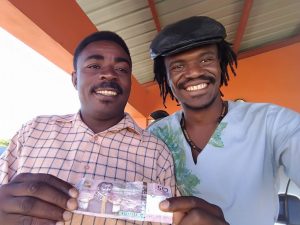 In early 2017, a group of young artists and intellectuals in Cite Soleil decided that it was important to build a library in Cite Soleil. Over the past decade, there had been a lot of investment in youth spaces, but these spaces were mostly for sports. They brought the idea to Konbit Soley Leve, who advised them that instead of writing a proposal to a donor, they should first look for support in their own community. They should give ordinary people in Cite Soleil the opportunity to participate in making this dream a reality, that they should be the first donors. So Konbit Soley Leve and the youth group began to go door to door with a cardboard box, asking for contributions.
In early 2017, a group of young artists and intellectuals in Cite Soleil decided that it was important to build a library in Cite Soleil. Over the past decade, there had been a lot of investment in youth spaces, but these spaces were mostly for sports. They brought the idea to Konbit Soley Leve, who advised them that instead of writing a proposal to a donor, they should first look for support in their own community. They should give ordinary people in Cite Soleil the opportunity to participate in making this dream a reality, that they should be the first donors. So Konbit Soley Leve and the youth group began to go door to door with a cardboard box, asking for contributions.
For the sake of transparency, each time someone contributes, the donor would take a
The campaign went viral. People across Cite Soleil, many living on less than $2 a day, began to donate, then across Port au Prince, then Haiti, then the world. Schoolchildren gave up their lunch money, strangers who overheard about the project on public transport asked to contribute. A volunteer once drove all the way from Port au Prince to Les Cayes (an eight-hour round trip) just to pick up a single gourde that a little boy wanted to contribute. The idea was to change the perception of who is a donor and who is a beneficiary, and give people a chance to participate in a community vision.
Progress to Date
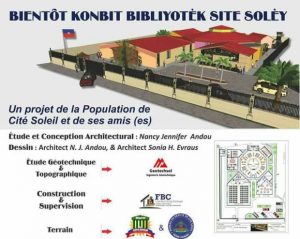 After 25 weeks of fundraising, 3,123 individual donors have contributed 1,080,771 gourdes (approximately $12,432 USD), and 3,641 books.
After 25 weeks of fundraising, 3,123 individual donors have contributed 1,080,771 gourdes (approximately $12,432 USD), and 3,641 books.
An architect from Cite Soleil has designed the plan of the library, which is a grand vision. It is important that the library be an impressive building because people in Cite Soleil are tired of being treated as second-class citizens – they believe they deserve a first-class library. The library may cost as much as 10 times as much as has been raised so far – but given the remarkable success to date and how much the community believes in this vision, there is confidence that the library will be built.
Help has come in many forms. The local authorities in Cite Soleil have already dedicated a space for the library in Place Fierte – the public park in the heart of Cite Soleil. Young Haitians have volunteered to provide graphic design and marketing services, to produce promotional songs and videos. A company performed the land survey for free (which would have otherwise cost $7000), and a construction company has volunteered to build the library without payment. There are already commitments for, once the library is built, furniture, free internet, and language classes. There are groups that have volunteered to train young librarians for free.
This project is called Konbit Bibliyotek for a reason, because it leverages the principles behind the traditional Haitian practice of Konbit: if everyone contributes what they can, we can collectively achieve what no one could achieve alone. The community has already done so much and gone so far – and it is now looking for more friends and allies to join in, and help turn this dream into a reality.
The Impact
 If this dream is realized, it will mean many things. First, it will provide an accessible space to promote learning, research, and debate in the heart of Cite Soleil; this will become a new center to provide community services. Second, it will help to change the image of Cite Soleil, both to young people in the community and to the rest of the world. Third, it will provide a new model of community-driven development and a statement of how Haitians can lead the way to a different future.
If this dream is realized, it will mean many things. First, it will provide an accessible space to promote learning, research, and debate in the heart of Cite Soleil; this will become a new center to provide community services. Second, it will help to change the image of Cite Soleil, both to young people in the community and to the rest of the world. Third, it will provide a new model of community-driven development and a statement of how Haitians can lead the way to a different future.How You Can Help:
• If you are in Haiti, contact Robillard.louino@gmail.com to arrange a visit to the library site, or to arrange dropping off books or making a donation.
• If you are outside of Haiti, you can contribute through our Global Giving site: https://www.globalgiving.org/projects/konbitbibliyotek/#me
• If you have any expertise, connections, or services to offer in support of this vision, contact Robillard.louino@gmail.com
_________________________________________________
 Louino Robillard is a Haitian community leader who was raised in Cite Soleil, Haiti’s largest ghetto. He has co-founded the Konbit Soley Leve movement, the Cite Soleil Peace Prize, and many other grassroots social change initiatives across Haiti. He graduated from the Future Generations Graduate School in 2013 with a Master’s in Applied Community Change and Peacebuilding.
Louino Robillard is a Haitian community leader who was raised in Cite Soleil, Haiti’s largest ghetto. He has co-founded the Konbit Soley Leve movement, the Cite Soleil Peace Prize, and many other grassroots social change initiatives across Haiti. He graduated from the Future Generations Graduate School in 2013 with a Master’s in Applied Community Change and Peacebuilding.
Future Generations University teams up with AmeriCorps West Virginia!
 West Virginia ranks third in the Nation for producing AmeriCorps volunteers. Each year over 1,000 individuals serve as AmeriCorps members in the state. Many AmeriCorps volunteers serve in their hometowns, while others come from across the country to make West Virginia their home for the year. AmeriCorps members change lives through mentoring, respond to disasters -like the June 2016 flooding, increase access to healthy and local food, preserve historic properties, and many conservation activities working with state agencies and non-profit entities alike.
West Virginia ranks third in the Nation for producing AmeriCorps volunteers. Each year over 1,000 individuals serve as AmeriCorps members in the state. Many AmeriCorps volunteers serve in their hometowns, while others come from across the country to make West Virginia their home for the year. AmeriCorps members change lives through mentoring, respond to disasters -like the June 2016 flooding, increase access to healthy and local food, preserve historic properties, and many conservation activities working with state agencies and non-profit entities alike.
Read on for an overview of the program!
Term 4: Synthesis & Integration—Analyze results of Project-based Research in community from both summative and formative perspectives within ePortfolio. Students are challenged to incorporate lessons learned during their MA studies with experiential-based reflection on AmeriCorps service.
Maple Sap Collection and Syrup Processing in WV
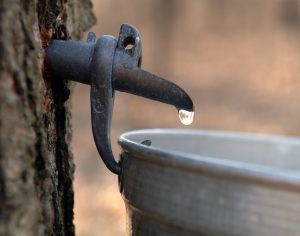 |
| Sap dripping on a good run |
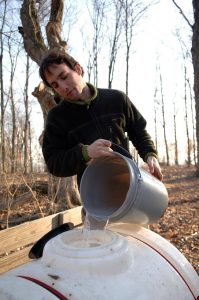 |
| Collecting sap at Principia College |
Maple Syrup in West Virginia? Doesn’t that stuff come from Vermont? Good question, and the answer is, well, yes. Ever since the marketing of “Vermont Maid”, an imitation maple syrup product, Vermont has been the state most closely associated with maple syrup. That being said, Quebec Canada is actually the largest producer of the sweet syrupy substance. And, Maine, New York, and Wisconsin are not far behind. What is less well known, is that West Virginia actually has more tappable sugar maple trees than Vermont, and a history of sugaring. All across the state there are place names like Sugar Grove, Sugar Creek and Sugar Valley, places with a history of making maple syrup. The last five years has seen resurgence in interest in “sugaring,” and the establishment of new sugar camps.
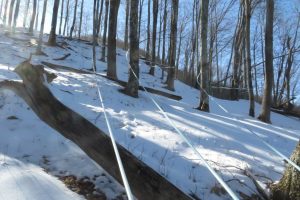 |
|
Main lines bringing sap to the sugarhouse
at the Dry Fork Maple Works |
 |
| Typical environmental conditions in a sugarbush |
Future Generations is also working with the Department of Agriculture’s Veterans and Warriors in Agriculture Program to offer a certificate course titled “Maple Sap Collection and Syrup Production,” while designed to meet the needs of veterans, this course will be open to anyone wanting to get into the maple business.
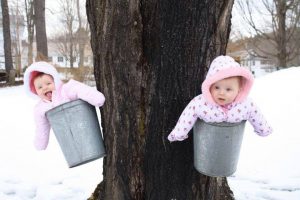 |
| Whoever said that that 2.5% is the sweetest thing in a sap bucket? |
Bridging the Gap: Peace Development Between the Leprosy-Affected Community and Surrounding Community in Addis Ababa
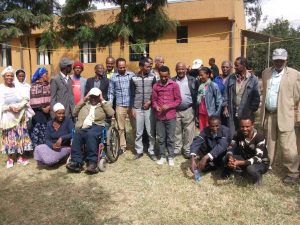 |
|
Fisseha with community representatives from the leprosy-affected
community and non-leprosy-affected surrounding community
|
The concept of the project came about from my work with those with leprosy in affected communities. In many countries, people affected by leprosy face a number of social and economic problems, such as discrimination and stigma. These issues are even worse for individuals who experience disability due to leprosy. They are more vulnerable to the endless stigma and discrimination than any other form of disability in our society.
Even after someone with leprosy has been cured, they’re unable to lead an ordinary life due to the consequences of lingering complications. Some of the most difficult complications experienced are they forced to live as a colony in specific area and they did not get access for education. As a result of the wide misconceptions that exist about leprosy, many of those affected are forced to leave their birth places and live in segregated groups, known as leprosy colonies. In the capital of Ethiopia, Addis Ababa, individuals who have been affected by leprosy are deliberately pushed out of the city and made to settle in a solid waste dumping site with no infrastructure and poor social services.
The leprosy-affected community of Addis Ababa is called the “Zenebework Community.” The majority of early settlers in the area were leprosy victims who largely migrated here from various other parts of the country– mainly Amhara, Tigray, Oromia, and SNNP regions. Their goal was to receive medical treatment for their leprosy at ALERT (All African Leprosy Rehabilitation and Training Centre) Hospital, formerly known as Zenebework Hospital.
After treatment, the leprosy victims were supposed to go back to their place of origin, as direct by the government, but the majority of them refused, preferring to remain in this area where they’d received treatment. This resulting settlement was named after the Zenebework Hospital, which had been established in 1932 and named after Princess Zenebework, daughter to Emperor Haileselassie. In 1949, the Abune Aregawi/Gebre Kristos Church was established in the same area, resulting in this name also being used for the locality. When construction began on the hospital in its present form as ALERT in 1967 and was later inaugurated in 1971, many other institutions, such as schools, followed. This provided a basic infrastructure that the leprosy victims had previously been completely without.
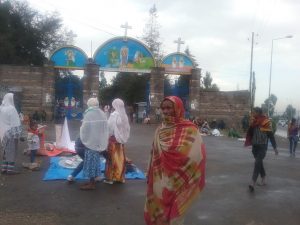
Below is an outline of the expected outcomes and major activities set in place to bring about this objective:
Expected Outcomes
Major Activities
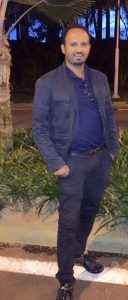 Fisseha is an Ethiopian who has more than 15 years of proven and practical work experience in different organizations. He’s worked in agricultural research institutes and both international and local NGOs, while holding different positions such as Research Technical Assistant, Development Facilitator, Project Officer, Program Coordinator, and Executive Director. He currently runs an NGO called Child of Present a Man of Tomorrow (CPMT) in Ethiopia, which works to promote the wellbeing of women and children. He is also presently studying a Master’s degree in Applied Community Change in Conservation concentration at Future Generations University to complement his backgrounds in agriculture, development and leadership.
Fisseha is an Ethiopian who has more than 15 years of proven and practical work experience in different organizations. He’s worked in agricultural research institutes and both international and local NGOs, while holding different positions such as Research Technical Assistant, Development Facilitator, Project Officer, Program Coordinator, and Executive Director. He currently runs an NGO called Child of Present a Man of Tomorrow (CPMT) in Ethiopia, which works to promote the wellbeing of women and children. He is also presently studying a Master’s degree in Applied Community Change in Conservation concentration at Future Generations University to complement his backgrounds in agriculture, development and leadership.Musings of a Naturalist III: QUETZALS AND COSTA RICA
|
The grounds of the Paraiso Quetzal Lodge. Each bungalow features a bedroom and an attached bathroom with solar-heated water. At 9,0000 feet altitude, nights can be cold (down to 5 degrees C or below) so hot water and extra quilts are much appreciated. The property is landscaped with plants that attract a variety of mountain birds including the Black-and-yellow Silky Flycatcher.
|
 |
| The Resplendent Quetzal (Pharomachrus mocinno) is the largest member of the Trogons, a family of forest birds featuring some thirty species in the tropical Americas, a dozen in tropical Asia, and three in Africa. Large trogons, such as this Resplendent Quetzal, feed primarily on fruit while the smaller ones, including the Scarlet-rumped in Southeast Asia, consume mostly insects, including caterpillars and other larva. Trogons are indicator species as they are very sensitive to deforestation, and their presence speaks of good forest conditions as they are cavity nesters, excavating their own nest holes mostly in suitably decaying tree trunks, and thus require trees of a suitable size age and size. |
 |
|
Jorge Serrano Salazar (pictured right) is the visionary behind
Paraiso Quetzal Lodge. He is also the general manager and
stands with this cousin, Jairo Serrano, behind the reception desk.
This is a family run operation with various members assisting as needed.
|
Jorge, a member of the extensive Serrano family, grew up in quetzal country and while studying rural tourism at his local high school, realized that showing quetzals to visitors could be a key income generating opportunity for the family – if only they could work out a system.
‘Quetzal tours’ were already in vogue in other quetzal hot spots such as Savegre Valley and Monteverde. Eager to see one of these birds, we visited the Savegre Valley where we engaged Marino Chacon as our driver/guide. Early one February morning he drove us slowly up the main road from the Savegre Lodge until he heard a bird and then quickly spotted a fine male sitting on a moss-covered branch in the cloud forest. There, in front of us, was an experience we will long remember: the classical image of a stunning quetzal.
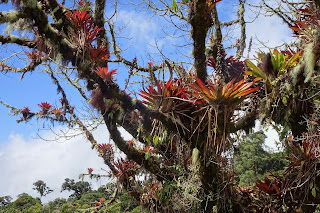 |
|
In a cloud forest, both rain and moisture from clouds is needed for the survival of epiphytic bromeliads such as these found on horizontal surfaces of oaks and other tree branches, usually sharing the surface with, lichens, ferns, mosses, orchids, and other plants. Curiously, bromeliads can occasionally take hold on power lines, a behavior rarely seen in other plant groups. Trees in these mountain forests need to have sturdy branch attachments in order to withstand the weight of the bromeliads, ferns, and orchids all soaked with heavy rain. The tree pictured here grew just northwest of the lodge dinning room.
|
In 2009 Jorge started his scheme by coaxing local farmers to search their property each morning, looking for quetzals, and should they find a bird, report to the lodge on their cell phones. Quetzals feed on wild fruit – especially wild avocados – as well as on frogs and lizards (during the rainy season) and once breakfast is ingested they usually sit quietly on a branch for extended periods. Thus guests at the lodge who are interested – and have paid a substantial fee – climb aboard a vehicle for a ride of fifteen or so minutes to the selected farm. Once you know where a bird is resting, the chances of arriving guests seeing a quetzal is high. Another seasonal method of locating quetzals, and one popular along main roads, is to find a nest with chicks and then watch the adult birds coming and going. The nesting season on the Pacific side of the Cerro del Muerte uplift normally begins early in March and lasts into May.
 |
|
The lodge’s mission statement speaks to the importance
of taking pride in caring for Mother Nature for future generations.
|
Jorge’s program, started with only two farmers, but now has become so successful that his list of reporting individuals has grown to twenty-two with two more waiting in the wings. In the high season, the lodge runs three ‘quetzal tours’ a day, each with a limit of ~6 people per group. It is mportant to limit the number of visitors to any one site, Jorge says, so as not to overly disturb the birds. Evidence of the success of this program is that some farmers are now planting wild avocados and other fruit-bearing trees on their properties.
 |
|
This Firey-throated Hummingbird (Panterpe insignis), one of 54 Costa Rican hummingbird species, was photographed at the Paraiso Quetzal Lodge. This is a montane resident usually found above 2000m (6,600’) altitude in central and southern Costa Rica and into extreme western Panama. The Firey-throated is a nectar feeder, sometimes probing for food at the bases of a bromeliad flowers by utiizing holes originally made by bees. Hummingbirds also consume insects and spiders as a source of protein and are so agile that they have no trouble darting into the air to catch a flying morsel
|
_________________________________________________________
|
Dr. Fleming with naturalist/guide Alanzo (pictured right), Quetzal showing
farmer William (left) and Serrano family member (far left); photo
taken by James Regali, Bob’s companion on the Quetzal search.
|
This week’s blog piece and photos make up the third installment in our Musings of a Naturalist series, courtesy of our own Dr. Robert (Bob) Fleming: Professor Equity and Empowerment/ Natural History. Having grown up in the foothills of the Himalayas in India, Bob has long been interested in the beauty of nature. This progressed into a fascination with natural history and cultural diversity, leading him to obtain his Ph.D. in zoology. He has explored many of the planet’s special biological regions, ranging from the Namib Desert in Africa to the Tropical Rainforest of the Amazon, and the Mountain Tundra biome of the Himalayas. He has worked for the Smithsonian’s Office of Ecology and the Royal Nepal Academy and, along with his father and Royal Nepal Academy Director-Lain Singh Bangdel, he wrote and illustrated “Birds of Nepal,” the first modern field guide to the birds of the region. In addition to his work with Future Generations, Bob is the director of Nature Himalayas, a sole proprietorship that he began in 1970. Through this company, Bob has led some 250 outings. He currently lives in the temperate rainforest of western Oregon in the USA’s Pacific Northwest.
Many thanks to Dr. Fleming for another great contribution!
Happy Father’s Day from Future Generations!
Luke Taylor-Ide has worked to combine academic interest in applied education with a parallel field-oriented approach to social change, having had extended, multi-year assignments in Afghanistan, India, and rural America. His findings affected national health policy in Afghanistan in regards to enabling women, and addressed the impacts of modernization on sustainable living in India. He currently focuses on the intersection of local agriculture economies, community-based preventive healthcare, and entrepreneurship in West Virginia.
Is there a project in particular that you all worked on that really sticks out to you?
Probably the most memorable project that I worked on with my father and grandfather was the “Pregnancy History Project” in Afghanistan and India. Several points are noteworthy about this project, most importantly it was the closest professional collaboration I got to share with my grandfather—it ended up being his last major research and action project. During this time, Bapu (Carl) and I traveled to Afghanistan and India to first launch a research effort to assess the impact of the Pregnancy History Method implemented 2 years earlier in Afghanistan and then also launch a parallel implementation approach in Arunachal Pradesh, India. We were closing our time in Kabul, Afghanistan when Dad (Dan’l) arrived to complete programatic work and we all overlapped for two nights in the guest house of the International Assistance Mission. One night we got into a debate about the appropriate placement and role for the concept of establishing a Shared Vision for change in community within SEED-SCALE. Each of us had a strong opinion and they were all different; we debated that point for hours in the living room until the other guests united and asked us to go to bed—we had no idea how late or opinionated we each had become. I am still not sure that any of us went to bed that night at all convinced of the other’s views—but I expect each of us thought our point had come out on top.
What’s the greatest benefit to working with your father?
We get to spend a lot of time together! As a result of interacting on a virtually daily basis, usually regarding work, we have learned to adapt our relationship from one of typical father-son to being colleagues and friends. We gain insight into one another’s daily life in a way that most father-son relationships cannot do. While this can be a delicate balance, having an enduring relationship that has evolved throughout the years has allowed us to know one another professionally as well as personally, which for better or for worse has brought us closer together.
What’s the hardest thing about working with your father?
At times the line between our professional and personal relationship can get blurred which adds significant strain on both. It is often difficult for us to “turn off” work when we are together. While this can have its perks such as working through a complex issue over dinner, it can also easily turn a relaxing evening into a night of work and debate. Unlike many working relationships, we are unable to cut ties completely if we have a disagreement so we generally work out our different views and are both better for it—but getting to common ground is not always the most fun.
What’s been your most memorable interaction while working with family?
The Ecological Footprint of Afghanistan and More: A Comparison of Afghanistan with Iran and Pakistan
Comparison of Afghanistan, Iran, and Pakistan
Similarities:
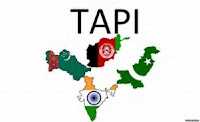 Turkmenistan, Afghanistan, Pakistan, and India, just recently started the TAPI project, which will further establish Afghanistan as a connecting point for Central and Southeast Asia. Through this project, natural gas will be sent from Turkmenistan to Pakistan, via Afghanistan, and then via Pakistan to India. The similarities, from an economic standpoint, can be seen as significant. The contribution from all of these countries, and in general, Central Asia with Southeast Asia, makes a great impact on the planet’s finite resources. This is especially so in the case of Central Asia’s supply of natural gas, and the high demand for it in Southeast Asia.
Turkmenistan, Afghanistan, Pakistan, and India, just recently started the TAPI project, which will further establish Afghanistan as a connecting point for Central and Southeast Asia. Through this project, natural gas will be sent from Turkmenistan to Pakistan, via Afghanistan, and then via Pakistan to India. The similarities, from an economic standpoint, can be seen as significant. The contribution from all of these countries, and in general, Central Asia with Southeast Asia, makes a great impact on the planet’s finite resources. This is especially so in the case of Central Asia’s supply of natural gas, and the high demand for it in Southeast Asia.
Differences:
The Main Factors Subject to Difference:
-
Huge population of Pakistan, and the ongoing fear of poverty in this country
-
The economic crises in Iran
-
The ongoing insurgency and terrorism threats in Afghanistan
-
The ongoing fear and increase in the percentage of poverty in Afghanistan
Conclusion of Differences, Potential Directions to be Taken
Personal Footprint
 |
| Afghanistan |
_____________________________________________________
 This week’s blog post contributed by Future Generations Alumnus Yasar Ahmadzai. Yasar has more than a decade’s worth of experience in the fields of peacebuilding, community development, democratization, and journalism. Carrying international expertise into the field of positive community change, Yasar was recently featured for his peacebuilding efforts by the Global Peacebuilding Center and the United States Institute of Peace. He previously worked with the Afghanistan High Peace Council, and also has the practical experience of working with different government institutions in Afghanistan and in the ongoing peace negotiations taking place in the country.
This week’s blog post contributed by Future Generations Alumnus Yasar Ahmadzai. Yasar has more than a decade’s worth of experience in the fields of peacebuilding, community development, democratization, and journalism. Carrying international expertise into the field of positive community change, Yasar was recently featured for his peacebuilding efforts by the Global Peacebuilding Center and the United States Institute of Peace. He previously worked with the Afghanistan High Peace Council, and also has the practical experience of working with different government institutions in Afghanistan and in the ongoing peace negotiations taking place in the country.
Empowering the Forgotten Peacebuilders: Persons with Disability
Using Self-Help Groups and Information Technology to Empower People with Disability in Tanzania: A lesson from the Nyamagana and Ilemela Districts of Mwanza City
|
Tusaidiane Disabilities Resources and Charity Organization of Tanzania, the NGO
started by Msafiri to address many of the issues noted in this study
|
 |
|
Disability consortium in the author’s community in the Lake Victoria
area of Mwanza
|
____________________________________________________________________
Responsible Mining in Ghana
Mention the word mining and an apocalyptic scene pops into mind…
 |
| Mirny Diamond Mine in Russia |
 |
| A local woman walking back from her farm through the mining concession |
While this is going on, residents from local communities are being employed anywhere from 12-18 months to collect local plants and shrubs for soil control. They will also be the ones employed in the planting process of these plants, as well as in the cocoa tree initiative. The total cost of the operations will be absorbed under SIKA MINING closure plan.
 |
| Hawk hunting on talings pond |
The most outwardly segment of the tailings pond reclamation plan called for re-establishing native plant species. As the mining activity has slowed in some areas, birdlife and aquatic life has already returned. At the tailings ponds each day, over a dozen predatory birds hunt for prey. As for the prey, mice, rats, snakes, smaller vertebrates, reptiles, etc., have re-established themselves, and there are also sightings of antelope returning (frequent) and some monkeys (rarely). Re-establishing the local flora will further help usher in the return of biodiversity to the area. The collection of the local plants and the planting will also be done by paid labourers from the local communities, thereby simultaneously benefitting both the local environment and the communities.
 |
| Spontaneous re-vegetation on south parameter of the SIKA Tailings Pond (nitrogen-rich plants inserted for soil enrichment) |
For more on Gisele, please visit: https://www.linkedin.com/in/gisele-elise-fortin-903b5785/
The Gender Dimension: Women and Wildlife
What do women and wildlife have to do with one another? Future Generations faculty member Teri Allendorf explains why this is an essential enquiry surrounding the preservation of tigers in Chitwan National Park in Nepal.
More and more frequently, attention is being given to the involvement of local communities as a factor in the success of conservation efforts around the world. As with all communities, men and women have different relationships with their environment due to the level of involvement that is customarily permitted. How does this factor into wildlife conservation? As put by Teri Allendorf and associate Neil Carter:
These findings may seem to be contrary to one another, but Allendorf and her collaborators have found that this is a common gender gap driven by differences in belief and experience. Because women in communities such as those near Chitwan National Park in Nepal have traditionally not been included in conservation efforts, they have a lack of knowledge regarding the value of ecosystems and the protection of them. Based on a survey of 499 people, Allendorf and Carter found that the difference of opinion regarding tigers in Chitwan was a direct result of women having less knowledge about the involvement of tigers in promoting a healthy ecosystem. This then lead to less positive feelings towards the tigers in general. Accordingly, Allendorf suggests that addressing the impact of women’s access to information may be one way of closing this crucial conservation gap.
Although wildlife conservation has traditionally been dominated by men, the research conducted in Nepal by Allendorf and Carter about tiger preservation around Chitwan National Park shows that the perspectives of women are beginning to merit more value. Their findings present that the importance of women in this effort may be of crucial importance for several different reasons, the most important of which are: (1) women may be more vulnerable to environmental change and so could be more supportive of conservation as a result, and (2) women can be active agents of change for conservation efforts; by ignoring them, half of the population that can actively help to affect change is being overlooked.
This is supported by statistics that show that natural resource management groups that include women have demonstrated greater collaboration, solidarity, and conflict resolution characteristics that those with only men. These factors then in turn contributed to better, more sustainable outcomes. For example, the inclusion of women in forestry groups in India and Nepal has been directly correlated with better overall conditions and faster forest regeneration as a result of the better monitoring and rule enforcement they brought.
Original study presented in Biological Conservation journal:Carter, N.H. & Allendorf, T.D. (2016). Gendered perceptions of tigers in Chitwan National Park, Nepal. Biological Conservation; 202; 69 DOI: 10.016/j. biocon.2016.08.002.
__________________________________
Additional reading on this subject at:
https://news.mongabay.com/2016/12/field-notes-boosting-biodiversity-by-studying-human-values-gender/
https://www.researchgate.net/publication/221689601_Gendered_Risk_Perceptions_Associated_with_Human-Wildlife_Conflict_Implications_for_Participatory_Conservation
_____________________________
Teri Allendorf will be returning to Future Generations University to share her invaluable knowledge and experiences with our conservation-minded students. More on Teri here:
Celebrating Mothers: Health in the Hands of Women
To celebrate Mothers´ Day today, and every day, Future Generations Peru happily agreed to share with the Future Generations community some basic information on their project called “Health in the Hands of Women” (MAM Project).
The stated project goal was to contribute to improving the health of mothers, newborns, and infants, and to reduce chronic child malnutrition. We wanted to demonstrate to the Peruvian Ministry of Health that it could effectively and sustainably implement at scale a model of primary health care organization and management in rural areas that could successfully support at scale a community-oriented system of health promotion that would reach mothers in the home to improve their home health knowledge and behaviors and improve maternal and child health status.
A key project activity was the implementation and testing of the innovative teaching method for CHWs, called “Sharing Histories,” that empowers mothers through the sharing their own memories of their childbirth and child rearing experiences, hearing other´s experiences, and learning best practices by analyzing what was done correctly or incorrectly in the past. Female CHW gained self-confidence to speak in front of others, took ownership of their own experiences, and became more effective in their home visits to other women teach them better health practices. The MAM project tested the effect of the “Sharing Histories” teaching method as an embedded operations research project using a cluster-randomized controlled trial.
The final evaluation studies of the MAM Project in 2014 were compared to baseline studies conducted in 2010, major findings showed major improvements in knowledge and practices of mothers related to health and nutrition of mothers, newborns, and children.
-
Significant reduction in chronic malnutrition in children 0-23 months of age whose mothers received one or more visits from a CHW, among mothers who could read.
-
Significant increases in knowledge of pregnancy, post-partum and newborn danger signs by an average of 16 to 48 percentage points.
-
Significant increase in newborns that were wrapped and dried immediately at birth (76% to 98%)
-
Significant increases in good hygiene and sanitation practices, including hand washing, disposal of infant feces, water treatment at the point of use, and reducing in-door breeding in dirt-floor kitchens of small animals (such as guinea pigs which are served for special meals).
-
Significant increase in the percentage of HF managed by CLAS Associations (43% to 70%).
-
Development of a new cadre of human resources for community health called Community Facilitators. All 47 of them continue to be paid stipends directly by the municipalities in 2017 for their work to support and supervise female CHW.
-
Community Facilitators and female CHWs are recognized by health workers as being key components for the HF-community health strategy.
-
Community Facilitators and CHWs are recognized by community authorities and municipalities as playing a critical role in improving community health.
-
The Huánuco Regional Health Directorate officially established a permanent “Center for Development of Competencies in Health Promotion” in the Acomayo Health Center which serves to sustain the new approach to community health promotion by guaranteeing the on-going training of trainers so they can continue the training and support to Community Facilitators and female CHWs on a wider scale.
-
Municipalities are increasing support to HFs by continued financing to the Community Facilitator stipends, training costs for monthly workshops, and non-cash incentives for CHW and Community Facilitators. Municipalities expanded their investment in contracting extra health personnel, constructing and remodeling infrastructure for health posts, providing equipment, implementing services (laboratory, maternity waiting homes), and providing fuel for motorcycles or bus fare for health personnel supervision to communities.
*CLAS are Local Health Administration Community Associations – private non-profit community organizations that collaboratively administer primary health care facilities under contract with the government.
________________________________________________________________
This week’s blog post and accompanying photos are kindly shared by Dr. Laura Altobelli, Future Generations University’s Professor of Equity & Empowerment (Health) and Director of Future Generations Peru. She has more than 30 years of experience in research, evaluation, and public policy innovation and advocacy, and uses these skills to bring scalable solutions for strengthening public health systems in developing countries.
Voices of Future Generations: Life in the Isle of Skye
By all counts, the Isle of Sky is an isolated and rugged place. In this episode of Voices, we hear about it from someone who grew up there.
“When people aren’t near services, you might tend to make more of an effort to do things together,” she suggests, while describing the community events and pastimes on the island.
The Treasured Natural Spring at Mount Moroto
Text and photos by Vincent Abura, MA student of class 2017
The Karamoja region of North-eastern Uganda has seen more than violent conflict for 40 years. As part of the Community Based Natural Resource Management Course in the Master of Arts degree program, Vincent looked at how stakeholders in a scarce and treasured water source are working together to protect the resource and share the benefits derived from it. The spring and its watershed are located in the red shaded area in Uganda below.
| Photo caption: Two women are standing right in the protected spring and talking about how they manage it. |
Mr. Joseph Nyimalema, the Area Manager for National Water and Sewage Corporation (NWSC), informed me that NWSC operates under the Ministry of Water and Environment and is mandated to supply water to urban and rural communities. NWSC pumps 15,000 liters of water per hour to supply to the urban-rural populations. NWSC is a strong benefiting stakeholder of the watershed, without which it cannot meet its obligations. The interests of NWSC towards the watershed is legal ownership of land for its 2 water generators, security and safety of its equipment. NWSC recruited security guards to provide security for the assets and safety of water pumped for public consumption.
Arok Jimmy, the Chairperson of the 20-member Resilience Adaptation Committee (RAC), promotes greenhouse and sack gardening as well as soil and water conservation through terracing. They teach communities to grow vegetables and adapt to dry land cultivation. RAC’s interest in the spring is to access water for the greenhouses and sack gardens in homesteads, also in the availability of land in the watershed to control run-off water through terracing.
A local tree nursery is also interested in the spring. An attendant, Mr. Lokoru Bernard, informed me that they are planting different types of seedlings including: K-apples, Eucalyptus trees, papaws, mangoes, and indigenous species that are adaptable to drought in Karamoja. There are approximately one million seedlings planted this year. When converted to monetary terms (assuming a seedling is sold at UGXs 500) 1 million seedlings would amount to 500 million Uganda shillings, an equivalent of $143,000 US. The interests of the planters is to raise income for their households, which can only be done sustained spring water, employing as many boys and girls as possible and to seek popularity to attract financial support from various programmes.
| Photo caption: The tree-nursery garden where the attendant is weeding the unwanted plants from the nursery. |
Over 2000 livestock drink from this spring on a daily basis. This is the most accessible and available safe water for livestock in the district. Other options include boreholes, which are shared with human populations and are overcrowded. To get the attention of the cattle keepers, I had to walk with them and their herds. According to one, Kotol Patrick, their interest is availability of water for livestock. He strongly asserted that, ‘without this source, there is no life for human beings who depend on animals for survival. We shall do everything possible, including fighting to death to ensure water is sustained for their main livelihood.’
In summary, many stakeholders depend on this spring and its watershed for their livelihoods and wellbeing. Many are actively involved in protecting the water, and each plays a unique and important role in the current use and future availability of this invaluable water source.
University Launches Multi-Country Peacebuilding Research Study
- Children are in school without disruption by rebels
- Being able to hold social events without police disruption
- How many dogs are barking at night
- Roads and other key infrastructure get repaired
- Women feel safe walking in the streets
- Able to access primary health care center
 |
| Photo caption: This map shows the 12 country sites (listed below) that are included in the current study. |
What does the Future Generations University adaptation of USIP’s work look like?
Musings of a Naturalist II: Gondwana Gardens
Text and photos by Dr. Bob Fleming
On our first day in northeastern Australia, in the Centennial Lakes Park in Cairns, we found an arrow pointing to the Gondwanan Evolution Garden.
A Gondwana Garden? I’d never heard of such a thing.
Gondwana, the southern part of the ancient supercontinent of Pangea, is a name well-known name in geological circles, but a garden? This was a first.
Then, on our last day in Australia, this time on Bruny Island off Tasmania’s east coast, we again came upon the concept of a Gondwana garden. Here on the 600 hectare (1,500 acre) Inala Private Reserve we explored their Jurassic Garden dotted with plants whose ancestors once grew on Gondwana.
As Australia is a continent isolated from others, it is quite understandable that many Australians are aware of the concept of plate tectonics and that continents move, ideas that were considered rubbish during my university days in the 1950s-1960s.
But how to explain the presence of kangaroos in Australia when they are not seen anywhere else in the world? The answer lies in the history of our planet.
Earth’s geological record shows that some 250 million years ago (mya) most of the world’s landmasses were melded into one supercontinent, now referred to as Pangea. Later, beginning around 185 mya, rifts appeared in Pangea and the huge landmass gradually split into two divisions, the southern section named Gondwana. In the ensuing millions of years Gondwana also fractured into parts and Australia is one of those remnants.
Today, much of the flora and fauna found south of the equator speaks of Gondwana. For example the Southern Beech, Nothofagus, survives today in an arc from southern Chile around to New Zealand, Tasmania and north into the mountains of New Guinea. Another example is the early cone-bearing Araucaria ‘pines,’ the distribution of which traces a similar arc from Chile around to New Guinea. Thus one now encounters the Monkey Puzzle tree in southern Chile (and as a garden ornamental commonly planted round the world), the Hoop Pine in Australia, and the Klinki Pine in New Guinea.
Both Nothofagus and Araucaria likely evolved in what was western Gondwana as an Araucaria fossil dating to 185 mya and Nothofagus fossil dating to about 135 mya have been found in beds from that region. Later, due to favorable conditions they continued to evolve and today survive on far-flung remnants of Gondwana.
Another Gondwana connection is seen in the Proteaceae family, illustrated by the colorful Banksias in Australia and the related Proteas from southern Africa. The parrot family is yet an additional link as members proliferate primarily in two areas of the world – Australia and South America. And then there are spiders. The closest relatives of the primitive Tasmanian Cave Spider (Hickmania troglodytes) are seen in Chile.
Species that evolved early may be driven extinct by climate change or out-competed by later arrivals but on isolated continents and islands with favorable conditions, protection may allow them to proliferate. As an example, 13 of the 19 recognized Araucaria species grow only on remote New Caledonia Island.
Kangaroos are the pride of Australia, the symbol of the Qantas, the national airline, and pictured on the Australian Coat of Arms. These pouched mammals (marsupials) speak not so much of a Gondwana connection but of continental isolation. Indeed, the flora and fauna we find today on whatever continent is the result of a combination of factors including genetic and geological history as well as both ancient and modern climates.
On our last morning in Australia, while admiring the plantings in the Inala Jurassic Garden, all arranged in family clusters, and thinking about the biological threads that connect these southern lands, we were watched all the while (albeit from a distance) by a Bennet’s Wallaby and a Forty-spotted Pardalote, representatives of families found only in Australia. The natural history of this continent is very special indeed.
Himalayan Master’s Students Complete Residential in Arunachal Pradesh, India
The Himalayan cohort of the Class of 2017 Master of Arts in Applied Community Change just completed their Term III residential experience in Arunachal Pradesh, India between March 17-27, 2017. Their site visits were facilitated and organized by Nawang Gurung, Regional Academic Director, with help from Future Generations Arunachal, current students who reside in the area, and other local partners.
Students were able to interact with a number of diverse projects and programs ranging from a school working to increase access to high quality, affordable education to vulnerable children to a program demonstrating the benefits of intercropping to increase income and also health outcomes.
The main learning and excitement for the group was focused on learning about examples and opportunities for promoting environmental protection, economic opportunities, and community health in tandem. Using human energy and building on local successes and assets, communities have been able to show substantial behavior changes within short spans of time and have been able to be sustain impacts over time.
Programme in China Wins 2016 Top Cummins Global Environmental Challenge Award
Cummins is a powerful global leader that designs, manufactures, sells and services diesel and alternative fuel engines. In order to reach its vision of “Making people’s lives better by unleashing the Power of Cummins” and to foster global environment improvement, Cummins initiated an annual competition from 2009 named as Global Environmental Challenge.
The top winner of 2016 Global Environmental Challenge was a water management programme in China that is being implemented by Beijing Foton Cummins Engine Co., Ltd (BFCEC) and Academy of Fuqun Environment. One of the Future Generations alumni from the MA class of 2015, Yu Xianrong, is the Programme Director at the Academy of Fuqun Environment and affiliated with Future Generations China.
The Programme, named as Source of Life—River Eco-restoration of Shang Zhuang Village (a village 60 km to Beijing city center), aims to realize sustainable watershed protection in Beijing suburb through a comprehensive multi-stakeholder approach on pollution control, ecological restoration, water source protection by action, environmental training and community participation. The programme duration is three years while 2016 is the first year.
Based on solid Need Assessment by using tools including Six Sigma and Participatory Rural Assessment, Academy of Fuqun Environment developed and implemented concrete need-based activities. Six workshops on water safety, health and zero waste were provided with active engagement from both the community and the corporate. A total of 202 Cummins employees volunteered 808 hours in testing polluted water quality, strengthening flood-control dam and clearing up garbage in the river way. Villagers’ domestic waste was reduced by 20% on average. The water quality in river way was improved as ammonia nitrogen was reduced by 26% while total phosphorus decreased by 50%.
Moreover, Academy of Fuqun Environment has fostered the development of village rule “no dumping garbage into the river”, and “rewards and punishment mechanism”. Another policy proposal – to collect domestic wastewater into a treatment plant, will be implemented in 2017 which will means 43,200 tons of wastewater will be safely treatment before discharging to the environment.
This programme has honored Cummins’ pledge that everything they do leads to a cleaner, healthier, safer environment in 2016. There is more to be expected in term of water resources conservation and community development.
Voices of Future Generations: Swami
“God is your soul and you’re always with your soul, right? Without your soul you wouldn’t be alive!”
A young child’s enthusiasm for God is infectious in this clip from Canada. He flips back and forth between chanting and explaining his god – his best friend.
This is the final track in the Voices series. To hear them all, visit our site on SoundCloud.
Voices of Future Generations: Penpal in the Outback
“Where you live, I think, it actually changes your opinion on quite a lot of things.”
Words of wisdom from a child living in the Blue Mountains of Australia.
This episode of Voices is about a fourteen year old girl in Sydney and her penpal – only 70 km away, but in a different world. She talks about what it’s like for her, an urban teen, to learn about life from someone her own age but living a wildly different life. But not so different in some ways as well.
“I suppose that where you live is what you make of it. It’s all about the people and the things that you love,” she concludes.
Musings of a Naturalist, Part 1
All of us are immersed in the natural world. We might reside near a park and be roused in the morning by a singing bird, or awaken on the 26th floor in a structure built of concrete and steel where we are be surrounded by designs and colors inspired by nature. Pictures on the wall inside might harken to the world outside.
 |
| Blue monkey at the rim of the Ngorogor Crater in Tanzania |
When one notices the natural world, whether in one’s own compound or further afield, it triggers curiosity. A fleeting glimpse of a flower or catching a snatch of bird song can raise the question: what is that flower, or what bird sings? After repeatedly noticing and recognizing individuals, it is natural that one puzzles over the question: how does such a flower or bird comes to be present here? Then, as a familiarity with nature increases, one’s thinking may expand to consider the framework, the bigger picture, of how several species interacting together form a community and what environmental factors govern such groupings.
An interest in nature, once started, is an ever-expanding realm of discovery – whether it be in nearby parks or exploring in distant lands. Travel is one vehicle that broadens horizons, takes us out of the familiar, and gives us the opportunity to connect with other people and to encounter new species. Thinking about nature around the world may lead to the realization that we all live in one biosphere on this one rather small globe in which the parameters for our survival are remarkably narrow. Thus for the sake of that flower or that bird, or indeed our own futures, we need to be caretakers of our environment. It is no accident that Future Generations University offers a master’s degree in Applied Community Change with Conservation. If we are to leave a better world for future generations, stewardship of our natural world is essential.
 |
| Gull on the Oregon coast |
Some thoughts on the usage of the term “natural history”:
At the present time the use of “natural history” has fallen out of favor. The term is very old fashioned. Very 1800s. The American Museum of Natural History, for example, was founded in NYC in 1869 and the British Museum (Natural History) in London in 1881. These days one does not study natural history but majors in fields such as ecology, biogeography, ethology, zoology, plant genetics, or other disciplines.
Yet “natural history” is a useful term and I find it hard to locate a suitable replacement, an umbrella that connotes an all-encompassing look at our world. One might use the terms nature, nature conservation, the natural world, or the world’s flora and fauna. Nothing, though, quite replaces natural history and I have circled back to using this as a good way to indicate an overall summary of our natural world.
Dr. Robert Fleming is a Professor of Natural History at Future Generations University. This is his first in a series of articles about the natural world.
Cite Soleil’s New Community Library
The Future Generations team in Haiti has recently been mobilizing local resources to create a library in the Port au Prince neighborhood of Cite Soleil. Residents are imagining the new library as a centrally located place where people can find books, study, and share ideas.
The new Bibliyotek Site Soley (Cite Soleil Community Library) got off to a strong start with a groundswell of community contributions such as those depicted in the photos in this post. The library is the newest initiative of Konbit Soley Leve, an organization led by a team of Future Generations students and alumni.
The library is an exciting example of SEED-SCALE in action. Responding to local priorities, drawing on local resources, and building on past successes, the library effort has created a focused platform for community action and solidarity. Not only are resources for a community benefit project being pooled in a transparent and inclusive way, but people have taken to social media to spread the word and share how they have participated. Using the hashtag #konbitbiblyotek, community members created visibility for the effort and built local pride and excitement among those who contributed. Organizers looked to community members for small contributions rather than wealthy donors who might be able to fund the project with one or two checks. “Marathon” is the name the Haitians give to this process of going door to door to collect donations. Money came not only from community leaders and local organizations, but also from school children, motorcycle drivers, and once word spread, from friends around the world.
Using digital methods of sharing community plans and actions, Konbit Soley Leve has harnessed community energy and funds to create the new library—which will serve both as an inspiration and a resource for the community for years to come.
Alumnus Publishes Manual on Traditional African Conflict Management Techniques
The Procedural Manual on Traditional Conflict Management Techniques is a compilation of traditional conflict management mechanisms, actors, institutions, and symbols that have been used in select Nigerian and Cameroonian villages. Jonathan Tim Nshing (Class of 2015) compiled the manual with support from the Future Generations Global Network.
The manual begins with a definition of what conflict management is, and more precisely, traditional African conflict resolution methods. It looks at different types of conflict in a traditional African setting. These include: ethnic/tribal, religious, family, and land disputes, among others. It also looks at the role of each of the actors and institutions involved in traditional conflict management such as the secret society, village traditional council, quarter heads, village development groups, and religious leaders. Nshing explores the roles of common symbols and ceremonies such as plants (peace plants, fig trees, calabash, kola nuts), rituals, animal sacrifices, and the pouring of libation. Finally, he examines the idea of restorative justice – the examination of guilt, remorse, and compensation. These are core concepts in traditional African conflict management. With guilt, for instance, Nshing looks at what it takes for an offender to confess, as well as what it takes for the society to forgive the offender.
The manual puts all of these mechanisms, actors, symbols, and concepts into perspective by looking at their real-life application in the Cameroonian villages of Bafanji, Bambui, Bawock, Ndzah and Oku, and the Nigerian village of Ikwuano. It is not meant to be an exhaustive study, but an informative guide on traditional conflict prevention, resolution, and management in Africa.
The Procedural Manual on Traditional Conflict Management Techniques is available through www.future.edu.
Future Generations Graduate Tsering Norbu (Class of 2009) Continues to Develop the Pendeba Society as One of Tibet’s Most Influential Non-Profits
The Pendeba Society, previously known as the Pendeba program, has faced many challenges throughout the years. The original Pendeba program was created in 1996 by Future Generations in Tibet as a method for local leaders to gain skills related to environmental protection, conservation, healthcare, women’s education, sustainable livelihoods, and renewable resources. In 2008, largely due to rapid economic development in China and an unstable political situation in Tibet, the Pendeba program was terminated.
 |
| Norbu (2nd from left) meets with pendebas in the Surmang region of Tibet. |
Tsering Norbu (Class of 2009), who previously worked with the Pendeba program in Tibet, realized the significant impact felt by locals when the program was discontinued. He faced the same question from people everywhere as he traveled from village to village -“What became of the pendeba program that had captured the profound interest of the community?” He knew he had to do something. He needed to go local. He decided to take the bottom-up, SEED-SCALE strategy to a new level by seeking the support of the Chinese government.
Norbu faced many challenges and restrictions. He spoke to countless officials, locals, and the movers and shakers in the communities who continually offered him support. One of his supporters included Mr. Gongu Duoji-La, the first Tibetan mountaineer to climb Mt. Everest, who also happened to be from a town close to Norbu’s own birthplace. After countless setbacks, frustrations, and tribulations, on June 26, 2009, Norbu created the Pendeba Society as one of the first civil organizations registered in both China and Tibet. The challenging process also became the basis for his master’s practicum at Future Generations University.
 |
| Pendebas meet in front of ancient, eroded towers in the Dingri region near Everest. |
In 2012, the Pendeba Society was conferred as a Top Grade Civil Organization by the Department of Civil Affairs of the Tibetan Autonomous Region. Recognition continued, and in 2014 the Pendeba Society won the United Nations Development Programme’s Equator prize and the Chinese Ministry of Environmental Protection’s Environmental Prize. Although the difficulties of functioning as a community development organization are still an everyday reality, the Pendeba Society stands as an example of what one individual can accomplish if his or her heart is dedicated to the cause.
“As a leader, you should have a strong passion to do something and have infinite patience to do it in many different ways until you realize your dream,” expressed Norbu. Norbu, in all his efforts, is a beautiful example of what a Future Generations University student can accomplish by the SEED-SCALE methodology with passion and local knowledge.
For more about the Pendeba Society, visit www.pendeba.org.
Voices of Future Generations: Building a School
In this installment of Voices, a South African child discusses what it’s like to build a school in their rural community.
Mapping Community Success
| Artisan gallery in Jacmel |
Jacmel is a sleepy seaside town on Haiti’s southern coast. In 1925, it became the first city in the Carribean with electricity and it has been a bright place ever since. It has some of the best preserved French colonial architecture, its meandering brick streets are lined with colorful buildings, and its numerous artisans sell handmade jewelry, painted kalbas, ironwork, and other items. Instead of competing for tourist dollars, twenty-seven of these artisans came together in 2009 to form G27. G27 (with many more than twenty-seven members today) is a collective that shares gallery space, advocates for Jacmel’s thriving arts scene, and collaborates on larger projects. As individuals, they are talented artisans. As a group, they are a powerful voice.
G27 is one of over seventy successful community initiatives included on Wozo Ayiti, a success map created by Future Generations Haiti. Wozo Ayiti (from “wozo,” a reed that symbolizes the resilience of the Haitian people, and “Ayiti,” the Haitian Creole spelling of “Haiti) is an effort to map and document the stories of Haiti’s communities and their achievements. It is based on the Positive Deviance (PD) approach. Rather than focus on the needs of a community, PD hones in on the diversity of strategies within a community to cope with common challenges.
Two years after the earthquake in 2010, Future Generations Haiti set out to find examples of Haitians’ ability to overcome devastation and improve their own living conditions. While there was a great deal of foreign aid coming into the country, there was little attention being paid to the ways that Haitians were mobilizing themselves. Staff members consulted community leaders and organized focus groups. They put together a list of fundamental characteristics of successful community-led initiatives. Then, the team traveled the country to find and map initiatives that shared these characteristics. At each site, the local practitioners would recommend another for the team to visit. The project snowballed all across the small Caribbean nation.
 |
|
| Moringa tree seedlings |
There is the Association of Valliant Women of Anse a Pitre (AFVA) that protects and empowers victims of domestic violence by teaching them revenue generating skills such as sewing and artisanwork. In the Port-au-Prince community of Bwa Nef, RAJEPRE is an organization that runs a community school to teach children about the importance of environmental protection and neighborhood pride. In the northern community of Limonade, residents have rallied around Basin Mambo. Basin Mambo (Mambo Lake) is a culturally significant tourist draw. The local residents volunteer by reforesting the ground around the basin, maintaining walls and canals, and providing horses and guides for visitors. Haiti is full of stories like this, of community members coming together and drawing on local assets.
Wozo Ayiti uses OpenStreetMap, an open source mapping program that was developed to bypass the restrictions on and limited availability of geographic information in many parts of the world. Future Generations students are trained in the program as part of the MA in Applied Community Change program. They use it to map assets and successes in their own communities, all over the world.
To learn more about success mapping, read Success Mapping: A Brief Guide, available at www.future.edu.
Utilizing Community Strength
Through three regions in Liberia, the Community Integrated Development and Need-Based Project (CIDNEP) reached 15,000 people in seven communities. Adolphus Dupley (Class of 2015), Associate Director with Liberia’s Department of Community Services, began CIDNEP after learning the principles of SEED-SCALE.
The influential idea for him was building on local successes and understanding community capacity. The result increased community access to essential services – education, water, sanitation, health, and agriculture – in Liberia’s most densely populated regions. “We created a partnership between all parties so needs are met.” says Dupley.
Prior to enrolling in the Graduate School, Dupley ran the predecessor project to CIDNEP. It used a one-size-fits-all approach. “There was no particular attention being paid to community capacity, knowledge, and involvement,” he remarks.
The Community Integrated Development and Needs-Based Project reached more people in its first year than its predecessor ever did. More than half are women. “We have made interventions in areas of gender where for the first time in some of these communities women are now playing major leadership roles,” notes Dupley. In addition to gender equity, the project addresses underground water pollution, forest resource management, and peacebuilding.
Future Generations Researches and Promotes Social Participation in Primary Healthcare Services
The Shared Administration Program in Peru is one of the successful community change experiences that the Future Generations SEED-SCALE methodology is based on. Co-founder Dr. Carl E. Taylor provided orientation to Peru in 1994 at the request of their Minister of Health to design a new program for primary healthcare with community participation. SEED-SCALE was then in the process of development, so the Peru program was designed on the basis of SEED-SCALE principles, while also soon becoming evidence for further development of the methodology.
 |
| Meeting of members of CLAS Las Moras, the original pilot site. |
Peru is now one of the few countries with a governmental health program that features legalized, regulated, and institutionalized community participation. A 1994 government decree gave community entities collaborative responsibility and decision-making power over the management of public resources to administer primary healthcare services. Called CLAS Associations (Local Health Administration Committees), these private non-profit entities work under contract with the state, and the medical chief of a primary care facility is executive director as the public sector counterpart. The three-way partnership involves government, health services, and community.
How does social participation reflect SEED-SCALE through CLAS? When local people identify their needs instead of only central planners, it improves equity and efficiency of public spending. The watchdog role of citizens overseeing use of public resources ensures transparency and reduces misuse of funds. Citizens can exert social control when they pressure health providers to come to work on time and treat patients well, and can make decisions on purchases (equipment, maintenance, extra staff) to ensure better quality of care. Social participation makes local health and development programs more sustainable. The CLAS program scaled-up rapidly to cover 32% of all 2,700 primary healthcare facilities nationwide because of word-of-mouth from satisfied communities. Future Generations was instrumental in development of a law on CLAS approved in 2007 by the Peruvian Congress that enhanced the SCALE-Cubed policy environment.
Future Generations has played a key role over the years in conducting CLAS program research and evaluation, preparing papers for dissemination and advocacy, and providing technical support on the CLAS program. Documents on the CLAS program in Peru are available through Future Generations University’s publications library.
Lifelong Learning
“You stop learning, you start dying,” insists Ruben Puentes, Professor and Director of Partnerships at Future Generations Graduate School. His career reflects his desire to expand – as a soil scientist for a government agency, a teacher for a U.S. university, the leader of a network of researchers in transnational migration, Associate Vice President of the Rockefeller Foundation, and a part-time potato grower on his farm in Uruguay. For Puentes, life is always a classroom.
 |
|
| Puentes (center) listening to a discussion between a farmer and a local expert in Manaus, Brazil. |
Puentes’ task at the Graduate School is to strengthen the Master’s Degree in Applied Community Change curriculum along with student teaching and advising. “This is a unique opportunity to continue learning, not only from faculty colleagues but from students themselves.”
Puentes’ students appreciate his global experience that links community development, natural resources management, and agriculture. Most are practitioners themselves with diverse experiences, and their questions force Puentes to continue learning.
“Education is in the learning, not the teaching,” Puentes says. “Future Generations Graduate School is the place to be for those with a passion for learning; it is difficult to find a better place either to start or continue a lifelong learning journey.”
Voices of Future Generations: Puddles
At Future Generations, we often flip the role of teacher and student. Everyone has something they can teach someone else and everyone has something they can learn from someone else. This is the inherent truth in learning communities.
This week’s episode of Voices embodies just that. A father attempts to teach his daughter a lesson and ends up learning one instead.
Voices of Future Generations: Girls from Halifax
Racism. Stereotypes. Job security. These have been contemporary issues in Britain surrounding the influx of refugees and the Brexit vote. They are contemporary issues, but not new issues. In this week’s Voices track, girls from Halifax, England talk candidly about these issues in their own community.
360 Degree Feedback

Advocating for Rural Communities
Sharing Histories
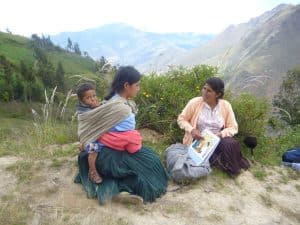 Customarily, mothers are taught health lessons which, even if simplified, are paradigmatic and hard to remember. Dr. Laura Altobelli, Professor and Director of Future Generations Peru, is leading research to advance a method that transforms the training of community health workers (CHWs), leading to faster progress in knowledge and behavior change of mothers who learn from older women whom they know and trust. Through systematic recall and sharing memories of personal experiences, this innovative behavior-change method engages and empowers female CHWs to take ownership of their cultural beliefs and practices, and on those build a new collective understanding for future behavior. Community health workers gain self-confidence and can better convince other women to uptake knowledge and behavior that improve health and healthcare use in the key first 1,000 days of life (conception to age two).
Customarily, mothers are taught health lessons which, even if simplified, are paradigmatic and hard to remember. Dr. Laura Altobelli, Professor and Director of Future Generations Peru, is leading research to advance a method that transforms the training of community health workers (CHWs), leading to faster progress in knowledge and behavior change of mothers who learn from older women whom they know and trust. Through systematic recall and sharing memories of personal experiences, this innovative behavior-change method engages and empowers female CHWs to take ownership of their cultural beliefs and practices, and on those build a new collective understanding for future behavior. Community health workers gain self-confidence and can better convince other women to uptake knowledge and behavior that improve health and healthcare use in the key first 1,000 days of life (conception to age two).Zumra: Testimony to the Power of Human Energy
Bringing Home Fresh Ideas
 The Future Generations Appalachia residential was interesting, insightful, well-planned, and incredibly helpful for my community in Athens, Georgia. Luke Taylor-Ide [Regional Academic Director for Appalachia] planned a residential that was so organized – meals, lodging and schedule – that we could 100% focus on our learning. I’ve been working in the field of urban gardening for a long time, and eventually started a composting business, Let Us Compost. If Let Us Compost were a bike, the residential was a living bike shop, oiling the gears, patching the holes in the tires, straightening the bottom bracket, while as I looked back upon Athens, I could see old bike paths I’d ridden a million times, new avenues to ride, and the air all around us that feeds everything.
The Future Generations Appalachia residential was interesting, insightful, well-planned, and incredibly helpful for my community in Athens, Georgia. Luke Taylor-Ide [Regional Academic Director for Appalachia] planned a residential that was so organized – meals, lodging and schedule – that we could 100% focus on our learning. I’ve been working in the field of urban gardening for a long time, and eventually started a composting business, Let Us Compost. If Let Us Compost were a bike, the residential was a living bike shop, oiling the gears, patching the holes in the tires, straightening the bottom bracket, while as I looked back upon Athens, I could see old bike paths I’d ridden a million times, new avenues to ride, and the air all around us that feeds everything.The most powerful visit was the trip to Refresh Appalachia, where we learned from a farmer how to use pigs to till the soil, use milk crates for an entire start to finish egg business, and how female animals really run the farms.This particular farmer was working in a coal mine and turning it into remediated, farmable land. He used an egg crate inside his hen house for roosts, the same crates to store empty egg cartons, to haul eggs (they have perfect circles that hold them steady), to wash and dry eggs (perfect drainage system), and finally to stack the full crates of eggs in nice squares for the market. The crates were free from a dairy and he used them for everything! With the land and sun he had an incredibly cycle that didn’t cost very much at all.
We visited the Capitol Market in Charleston where we saw a hand-painted public piano. I loved that it was out for everyone to see, anyone could play it and it spread joy all around. Somehow it was beautifully maintained too, and didn’t get destroyed by the weather.This taught me that if I’m going to get everyone in Athens to compost, I need for my community to understand what we are doing, and why. But more important than that, I need to involve my community more in what we are playing – asking for their input, talking to people who don’t compost and what they need to do so, and digging into the deeper environmental concerns that our community has – rather than just my own. I can set up a beautiful piano of sorts, but everyone needs to play it, the proper person needs to maintain it, and it needs to benefit the public, even if with new songs I’ve never heard.
 Due to a conflict that occurred with a Let Us Compost staff member while I was away on the residential, I created a template for our composting pilot which allowed our farm manager to give us six months of information about how to compost weird things at a farm. Before having this report, all his information was kept secret, and he felt like he wasn’t listened to or valued. Now he openly shares his ideas and processes, so we can all be a part of it.We launched a new test pilot to pick up CHaRM materials – things that are traditionally hard to recycle, and the only people participating are our clients – so they get all the input. My classmate Ashley inspired putting this into action – hearing about her community’s struggle with recycling made me incredibly grateful for the infrastructure we had – I finally saw it as an asset! Future Generations has really stressed this point – our community voices is what should drive social change – and it can flow through SEED-SCALE‘s process. Within days the lessons from the residential were applied – and it’s been working really well – our team is united, we’re sharing ideas, following process, and repeating systems instead of creating new ones. Thank you for my education!!
Due to a conflict that occurred with a Let Us Compost staff member while I was away on the residential, I created a template for our composting pilot which allowed our farm manager to give us six months of information about how to compost weird things at a farm. Before having this report, all his information was kept secret, and he felt like he wasn’t listened to or valued. Now he openly shares his ideas and processes, so we can all be a part of it.We launched a new test pilot to pick up CHaRM materials – things that are traditionally hard to recycle, and the only people participating are our clients – so they get all the input. My classmate Ashley inspired putting this into action – hearing about her community’s struggle with recycling made me incredibly grateful for the infrastructure we had – I finally saw it as an asset! Future Generations has really stressed this point – our community voices is what should drive social change – and it can flow through SEED-SCALE‘s process. Within days the lessons from the residential were applied – and it’s been working really well – our team is united, we’re sharing ideas, following process, and repeating systems instead of creating new ones. Thank you for my education!!Regional Residentials Expose Students to Community Development Successes
 “After the great residential program in Ethiopia am just back to the office. This program was very special to me for it exposed us to unique experiences with a selection of relevant institutions and communities. All of us were so active to attend, tirelessly asking questions, and compiling our new learning around the clock. We covered a huge distance during the field visits but it was a learning process all along. With this, I like to express my appreciation to fellow students and I like to say thank you very much for the Graduate School management and faculty for giving us this opportunity. A thank you should also go to all institutions who hosted us and gave us their time generously. But most importantly, I love to recognize Firew Kefyalew [East Africa Regional Academic Director] for his special effort and attention for the great success of the program.” Zerihun Damenu, Class of 2017
“After the great residential program in Ethiopia am just back to the office. This program was very special to me for it exposed us to unique experiences with a selection of relevant institutions and communities. All of us were so active to attend, tirelessly asking questions, and compiling our new learning around the clock. We covered a huge distance during the field visits but it was a learning process all along. With this, I like to express my appreciation to fellow students and I like to say thank you very much for the Graduate School management and faculty for giving us this opportunity. A thank you should also go to all institutions who hosted us and gave us their time generously. But most importantly, I love to recognize Firew Kefyalew [East Africa Regional Academic Director] for his special effort and attention for the great success of the program.” Zerihun Damenu, Class of 2017
Graduate School Kicks off New Year-Long Applied Research Webinar Series
Future Generations Graduate School kicked off its monthly webinar series with a strong faculty showing and invaluable perspectives from alumni. The discussion set the tone for webinars to follow. From now on, they’ll be divided into two parts:
- A Theoretical Discussion on topics such as why to do applied research in the first place; pros, cons, and options for publishing applied community-based research; and the ins and outs of developing strong research questions. This portion of the webinar will include expert perspectives, guest speakers, and optional background and resource materials.
- A Presentation of either an active research project or an idea for a future research project by a member of the team – faculty, alumni, or current student. Presenters will have the opportunity to receive feedback, constructive criticism, and encouragement from peers and mentors alike.
The purpose of the webinar series is to discuss research-related topics, learn new skills, and provide peer review and encouragement from members of the global team. It is an institution-wide effort to raise the profile of the Graduate School’s applied research, and to encourage further collaboration and capacity among the Global Network of students, alumni, and faculty. Applied research has been an integral part of the master’s degree curriculum and part of the work of Future Generations since the original research that informed its creation. This year in particular, the Graduate School is focused on scaling up and strengthening its educational offerings as well as the scholarship and practice generated by the institution.
Majoring in Life: The Career of Future Generations Professor of Natural History Robert Fleming
“How can you major in life? How can you major in the beauty of the world? You have to choose a major to get a degree, but those were the things I wanted to study. . . My interests are in the beauty and diversity of nature, and having my Ph.D. in zoology was a stepping stone that gave me access to different areas of the world.”
 |
| Trinidad Motmot |
 |
| White-Necked Jacobin Hummingbird |
The Peacebuilding Experience and Applied Research Possibilities in Somaliland
 |
| Banner in Hargeisa showing former presidents of Somaliland. |
 |
| Professor Kefyalew (L) and Abdishakur Hassan-Kayd (2017) |
Researchers Find Encouraging Changes in Mt. Everest’s Gama Valley
 |
| Yak relax in the setting sun with Mt. Everest in the background. |
 |
| The Researchers in front of a map displaying Gama Valley trekking routes. |
In accordance with the QNNP’s master plan, official trekking packages are now being offered in partnership between park authorities and local guides ensuring that good and equitable pricing practices are being adhered to. Designated trekking routes have been created with fixed camping sites, lowering the environmental damage, while maximizing the economic opportunities for local communities. Chinese tourists are now visiting the QNNP by the thousands each year. The park’s simultaneous mandates to preserve natural beauty and create economic opportunity are introducing new challenges for local communities such as trash collection and logistics management. Despite these challenges, the team was excited to find that both flora and fauna are increasing. Now back on North Mountain, the researchers are developing responses to the problems caused by overuse.
Future Generations Prepares to Launch Applied Research Webinar Series in September
Dusty Dreams in the Desolate Wilderness
 |
| Chao Erh-Feng State Library of NSW, Australia |
“Davis takes a particularly negative view of Chao, and some commentators are a bit kinder to him, but he was pretty ruthless,” notes Jantzen. In another account, historian Alastair Lamb refers to Chao as “one of the last great soldier-bureaucrats of the Manchu era.”
Voices of Future Generations: Fishing with Dad
Research Methods Training in Kabul, Afghanistan
Voices of Future Generations: Baby Sister
Saving Children’s Lives Through Community-Based Health Interventions: Bringing Together the Evidence for What Works
For more information about this exciting and unique systematic review, you can check out previous publications at: https://www.tandfonline.com/doi/abs/10.1080/17441690903330305. You can also contact Meike Schleiff for more information.
Journey Towards the Light
Voices of Future Generations: Helping Mom
Future Generations Graduate Student Works to Expand Recycling Opportunities and Education in West Virginia
“An Imaginative and Practice-Based Example”
Honoring the World’s Number One Healthcare Provider: Mothers
The Pendleton Times Picks up Projects for Peace Story
Future.Edu Student Emmanuel Kotin Awarded 2016 Kathryn W. Davis “Project for Peace” Grant

Emmanuel Kotin, a member of Future Generation’s class of 2017 from Tamale, Ghana was awarded the prestigious “Project for Peace” prize for his proposed project A Community United against Terrorism, a documentary film project about how a sleepy farming community in northern Ghana mobilized against a group of terrorists with suspected links to Boko Haram, the Taliban, and other groups. The award comes with a $10,000 prize that he will use to produce and distribute the documentary. For the complete story, read the press release at Future.Edu.

